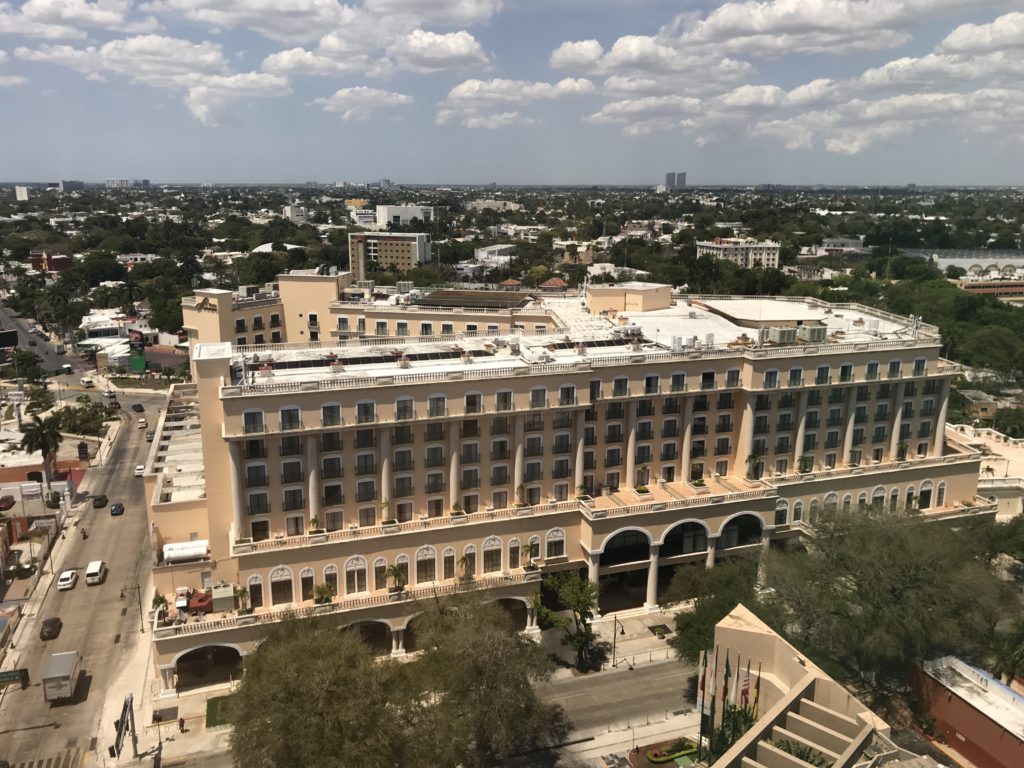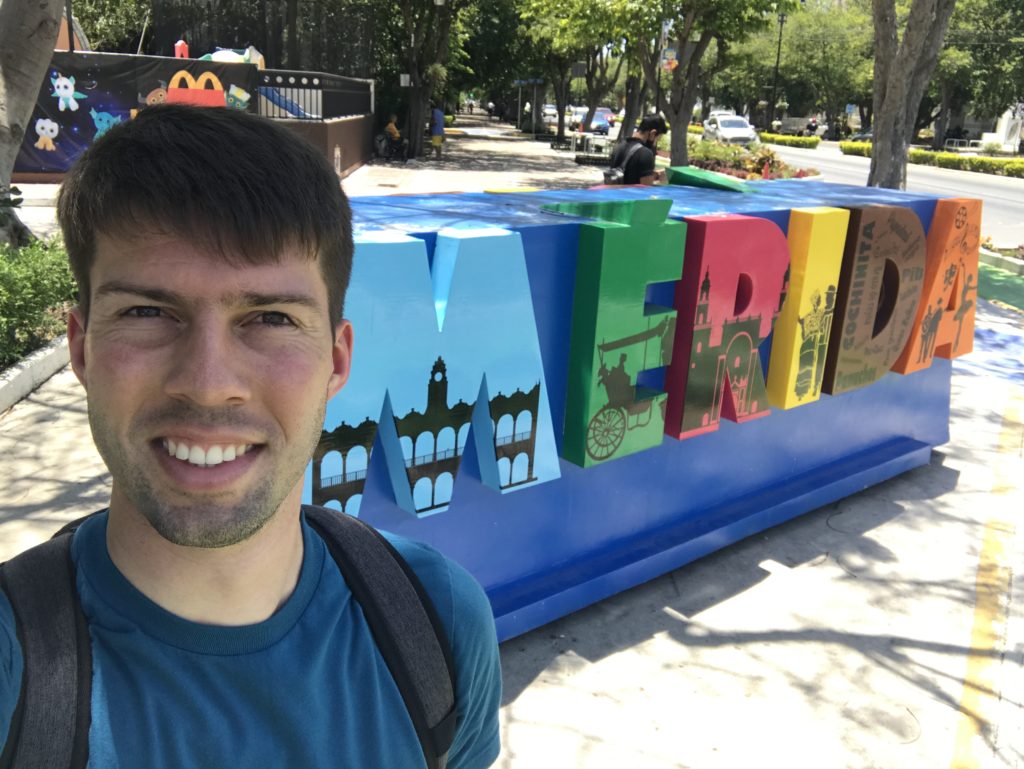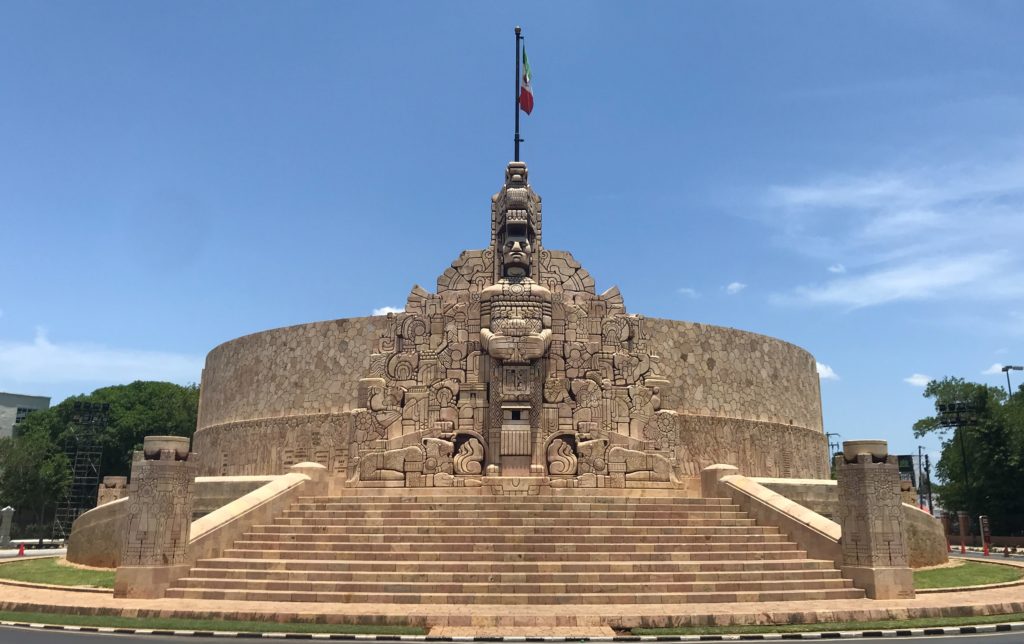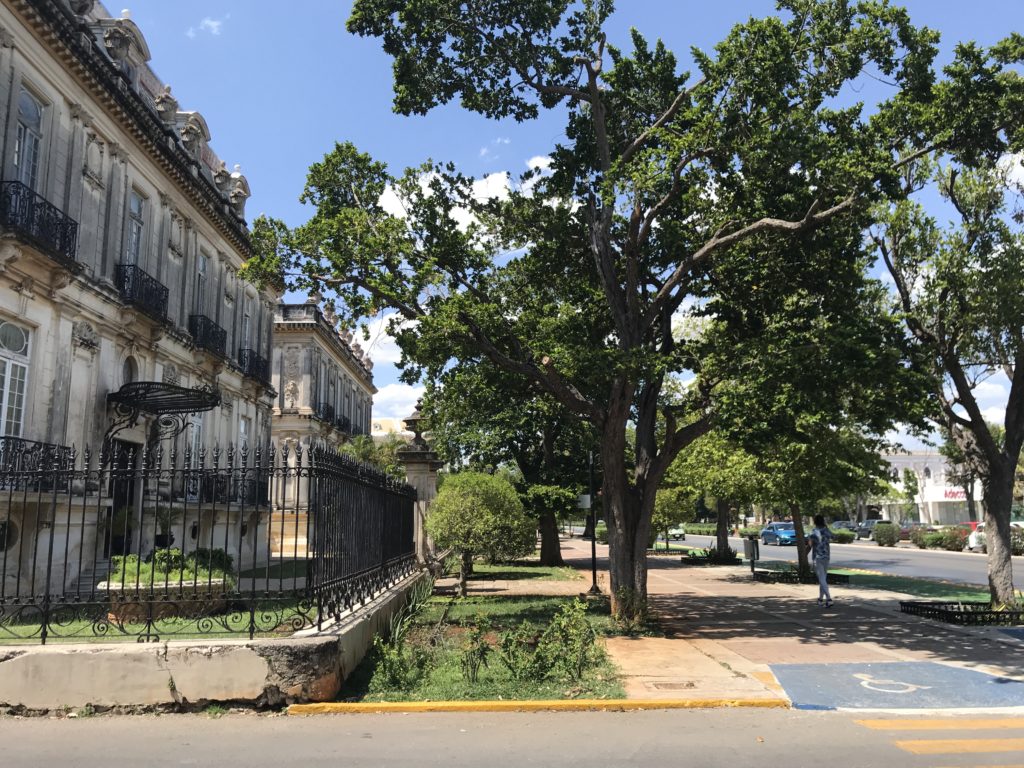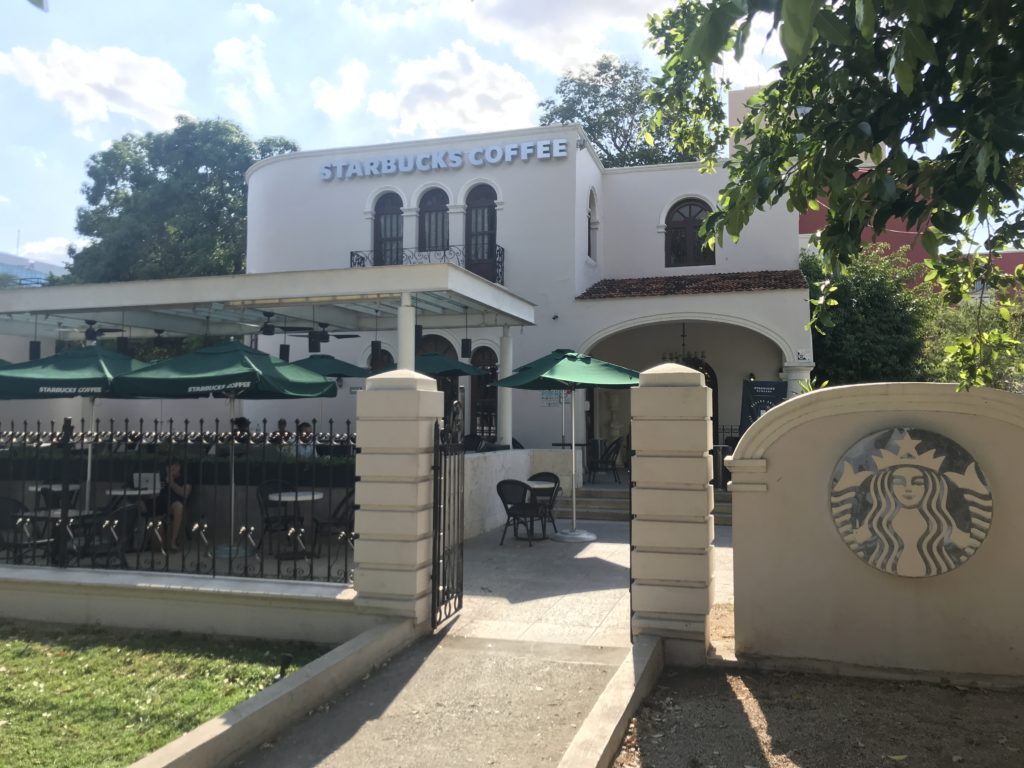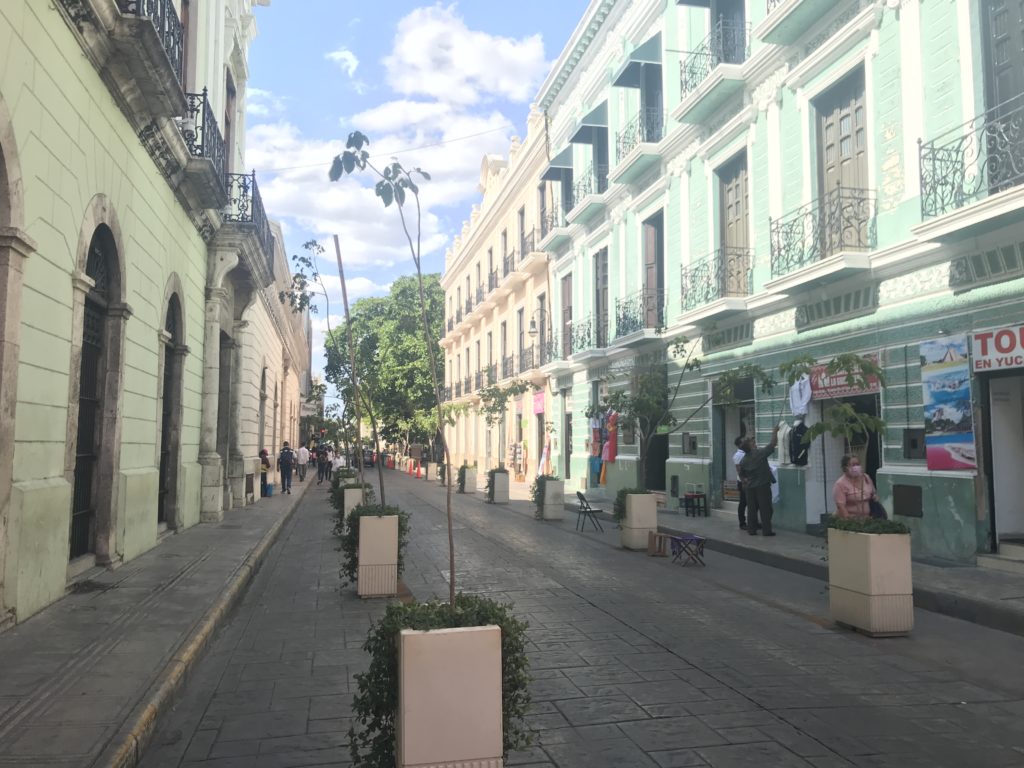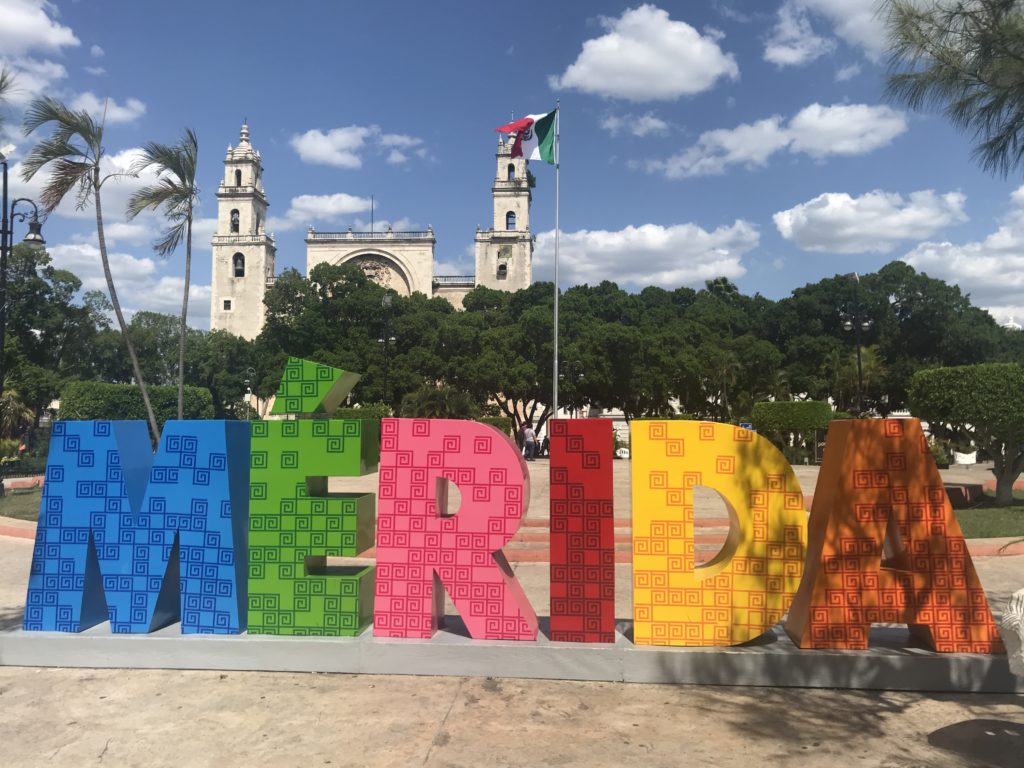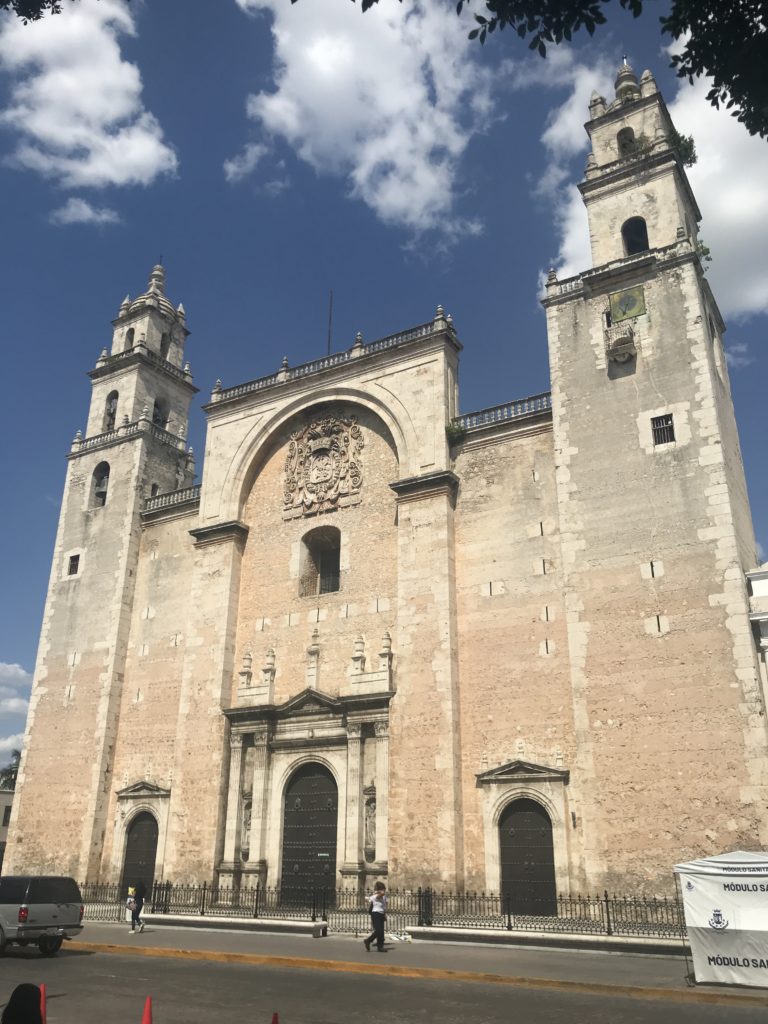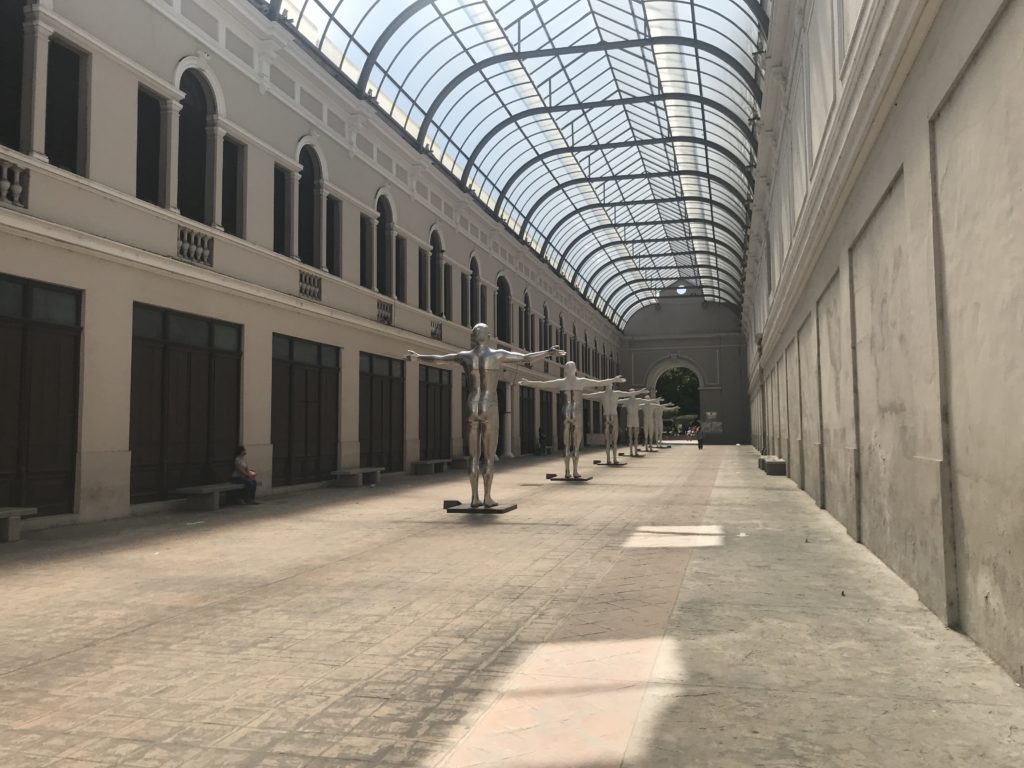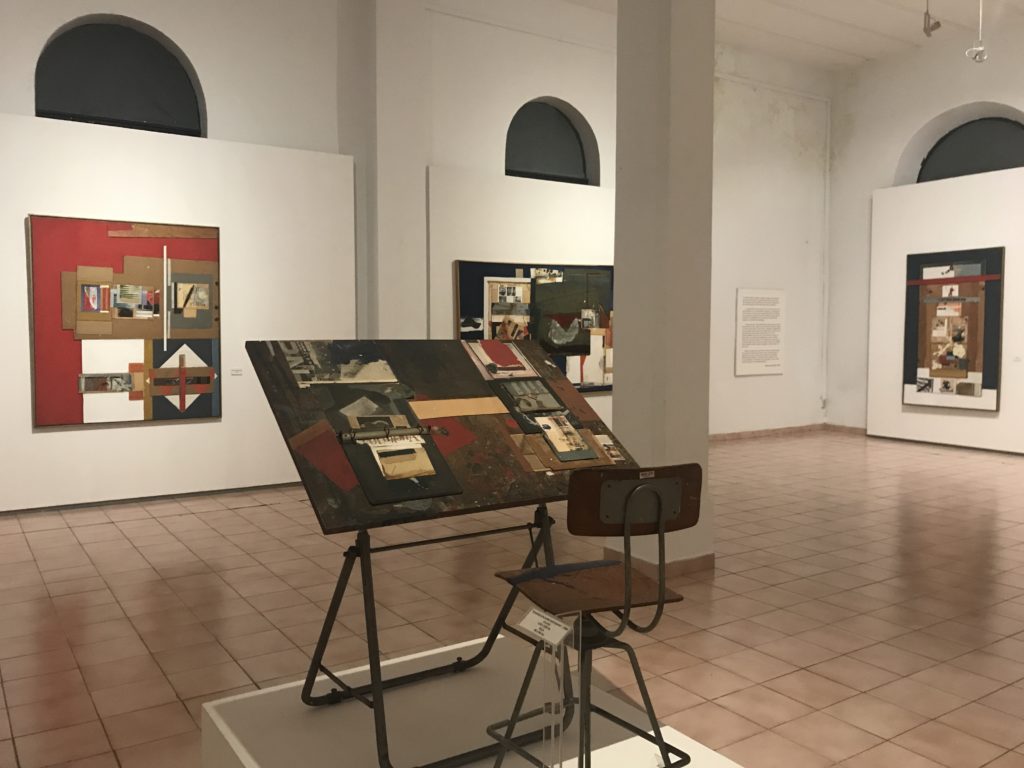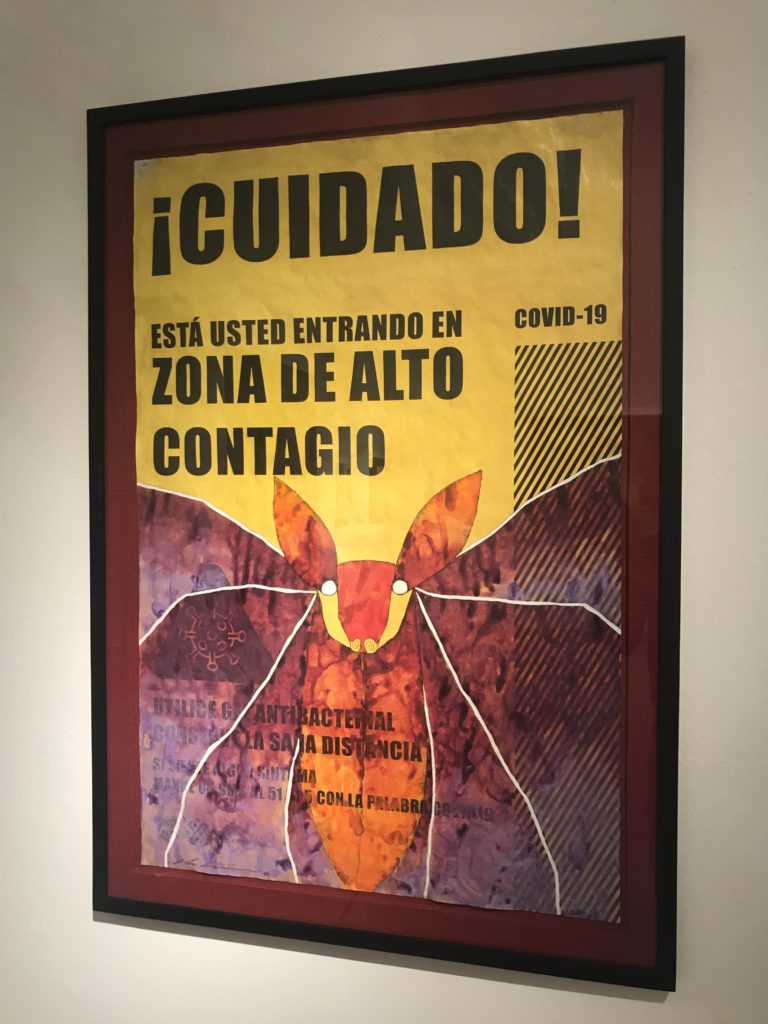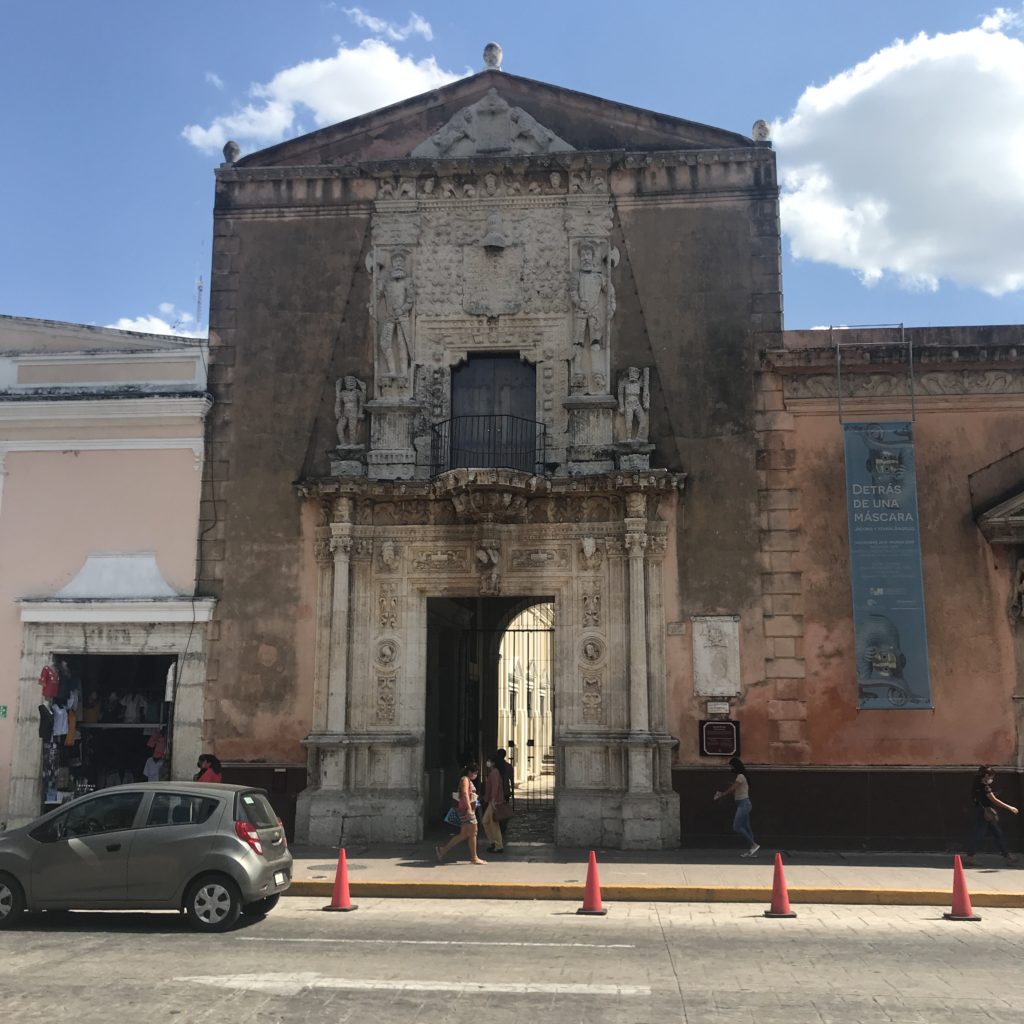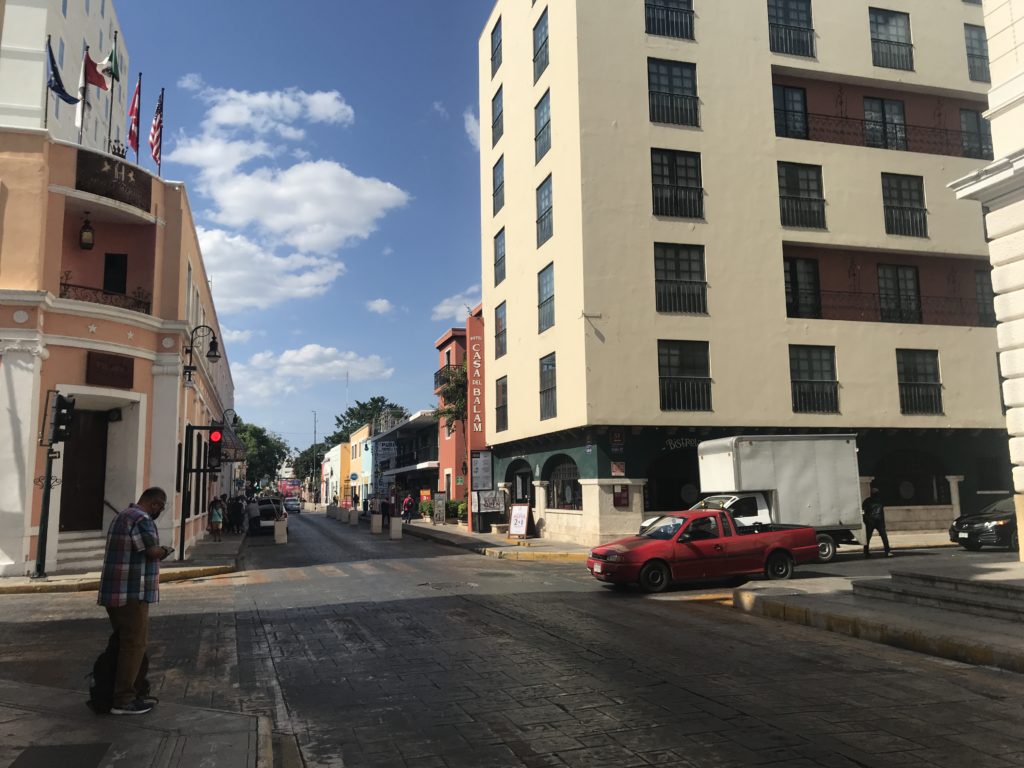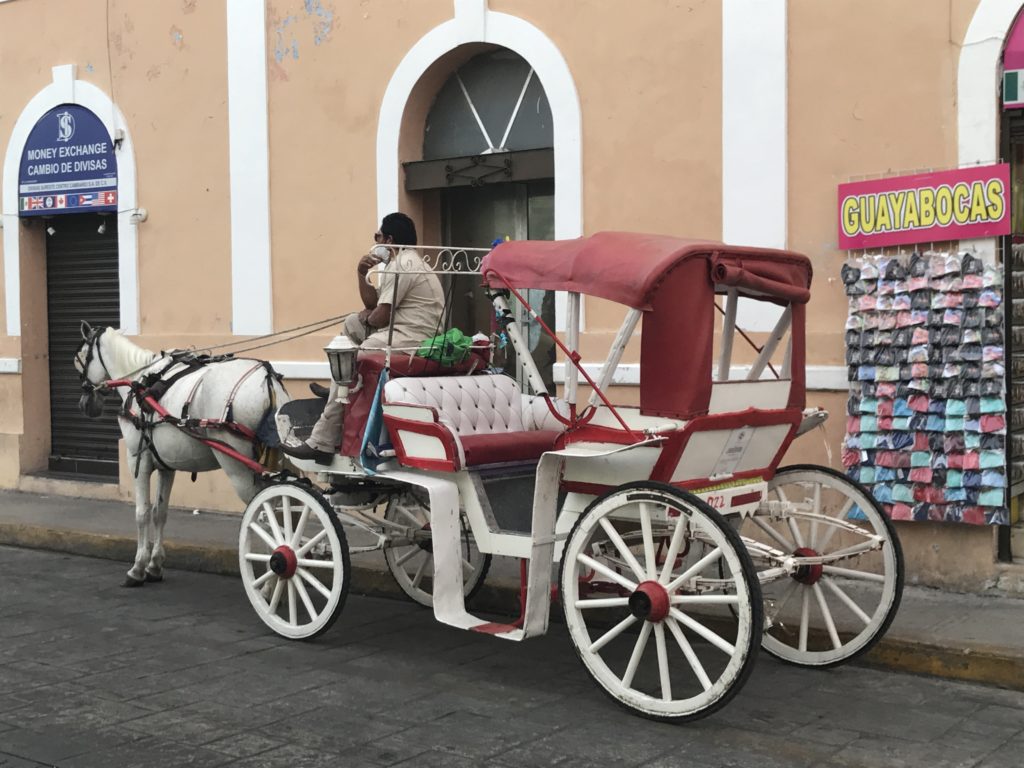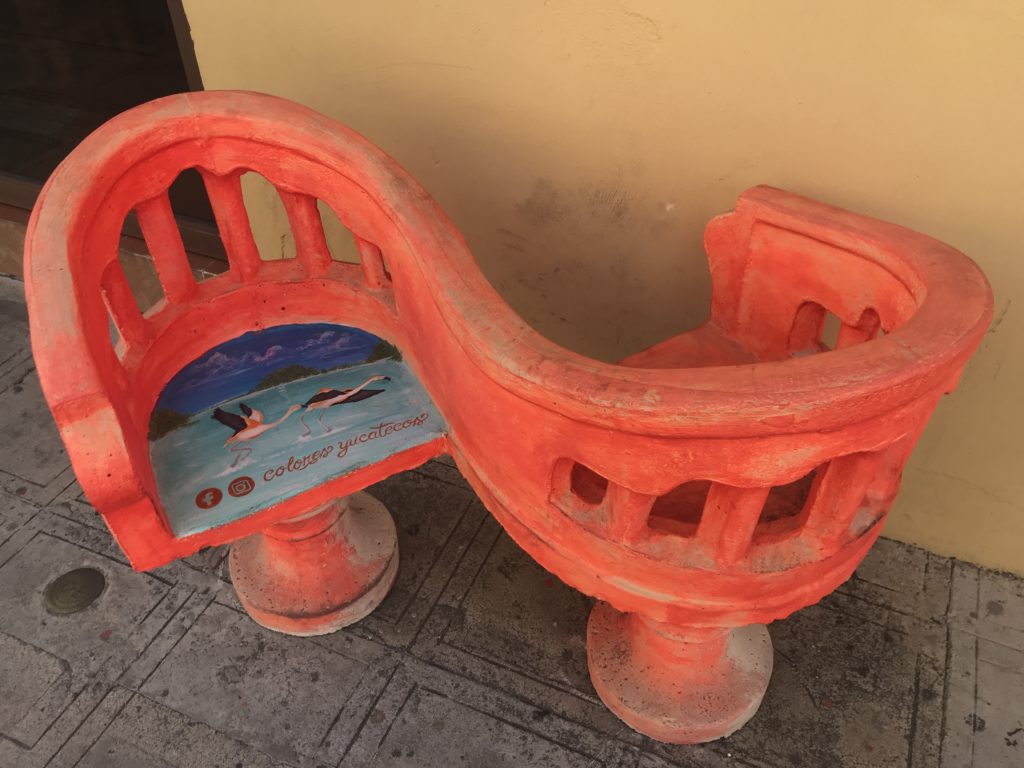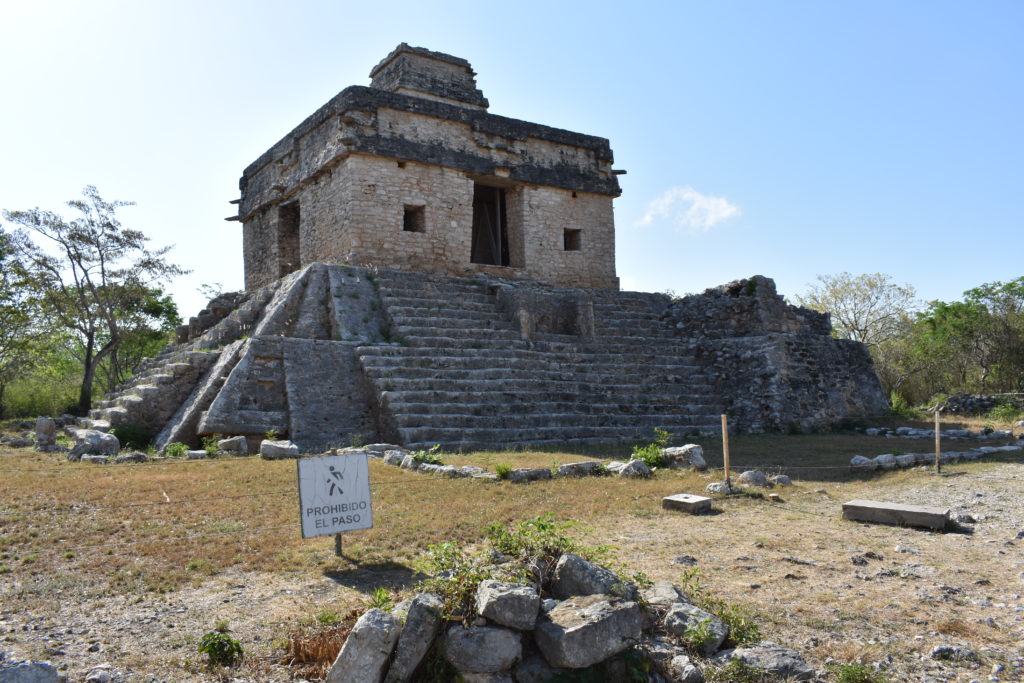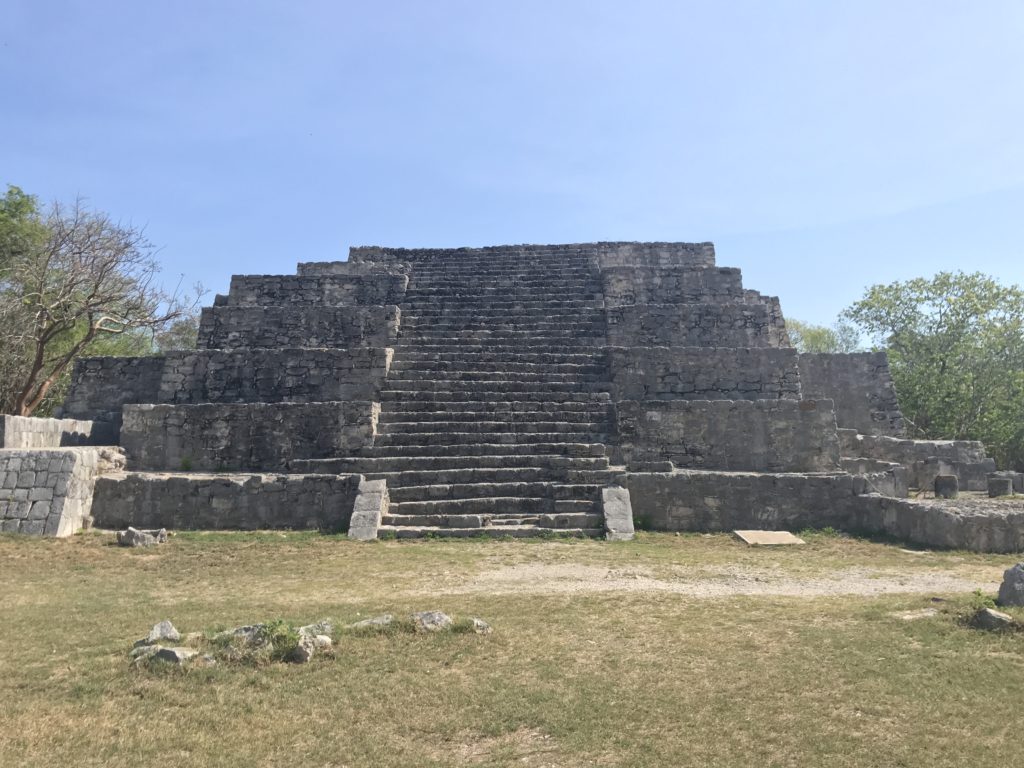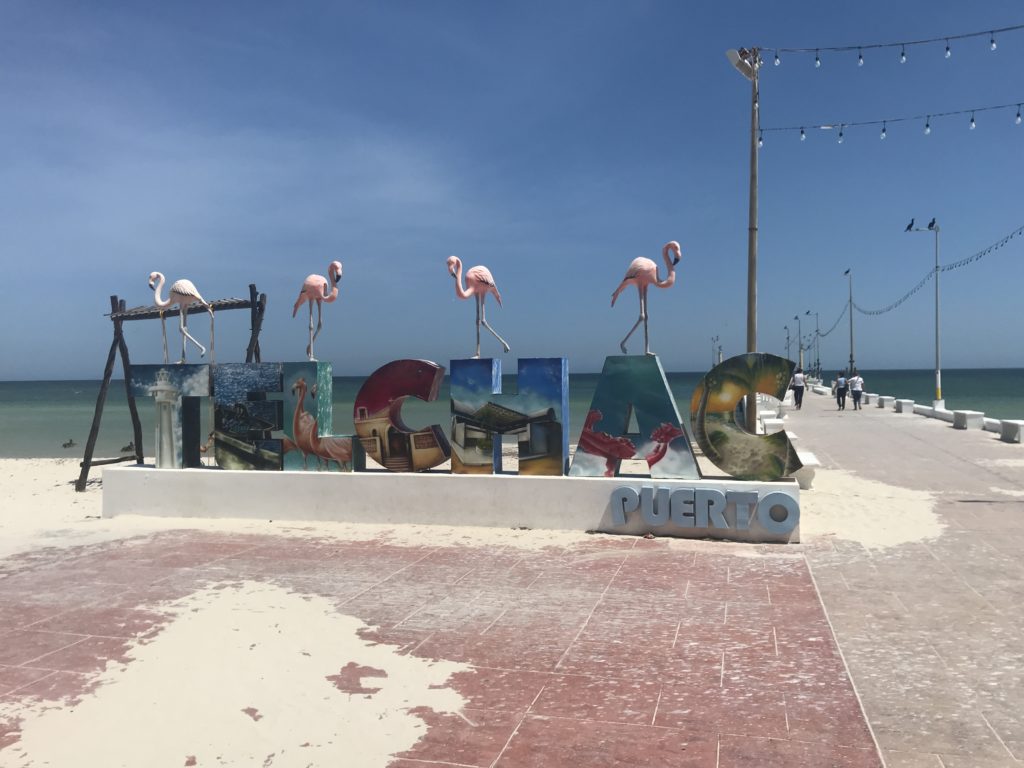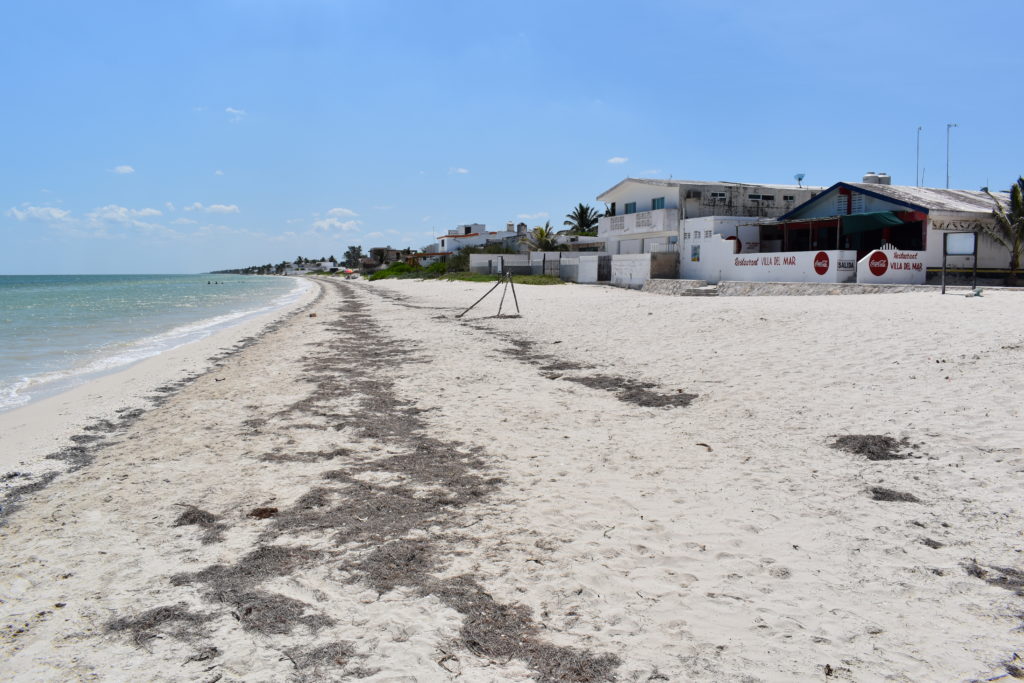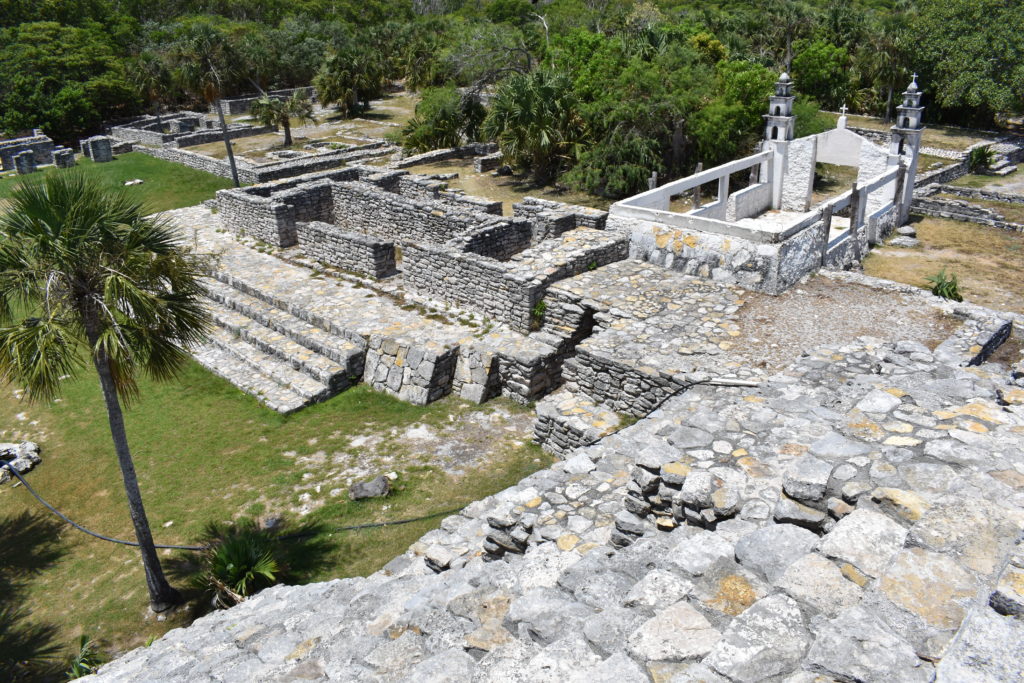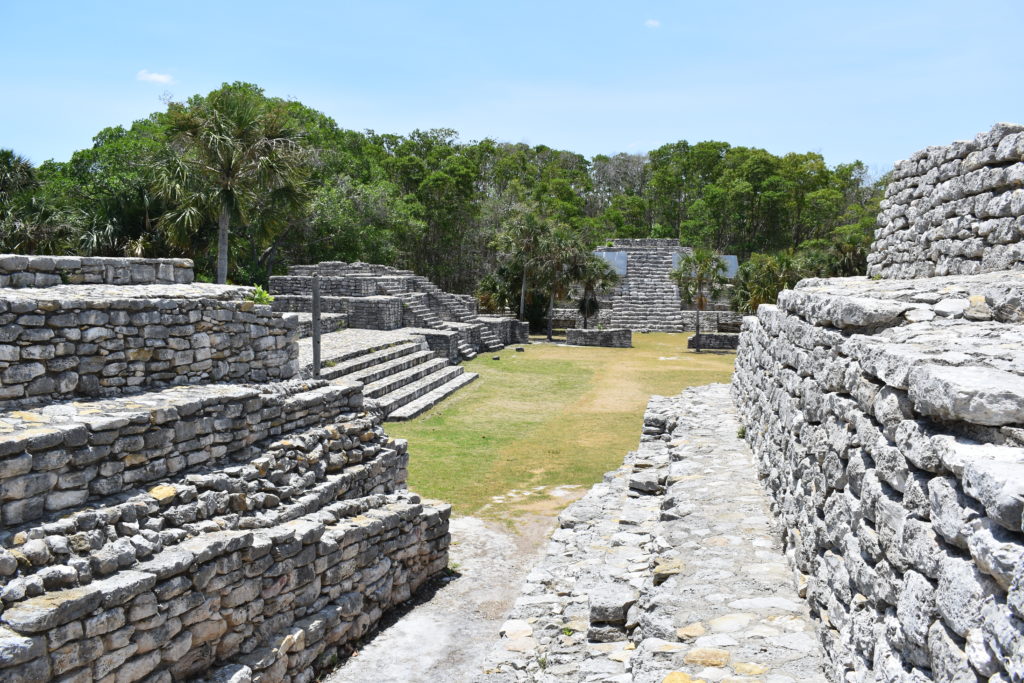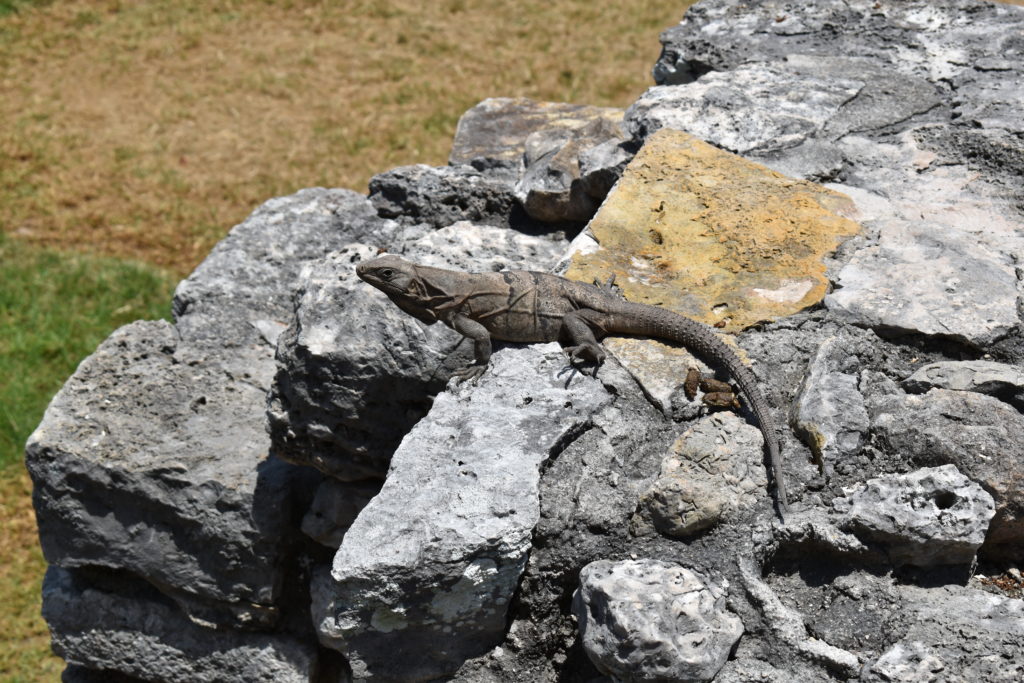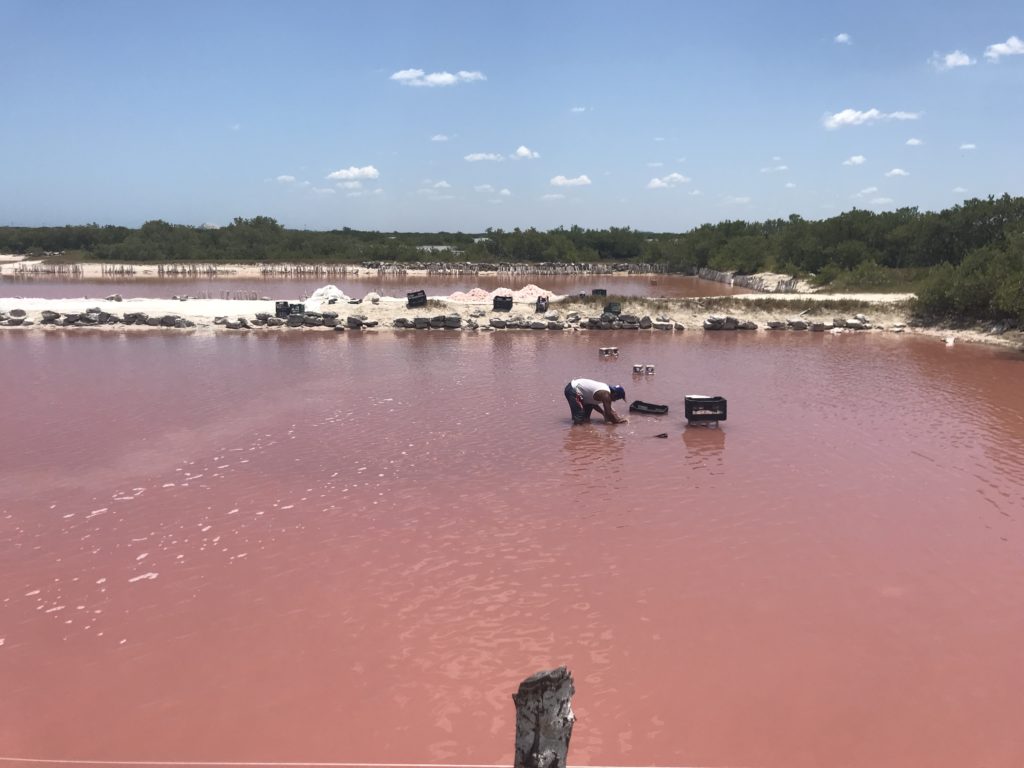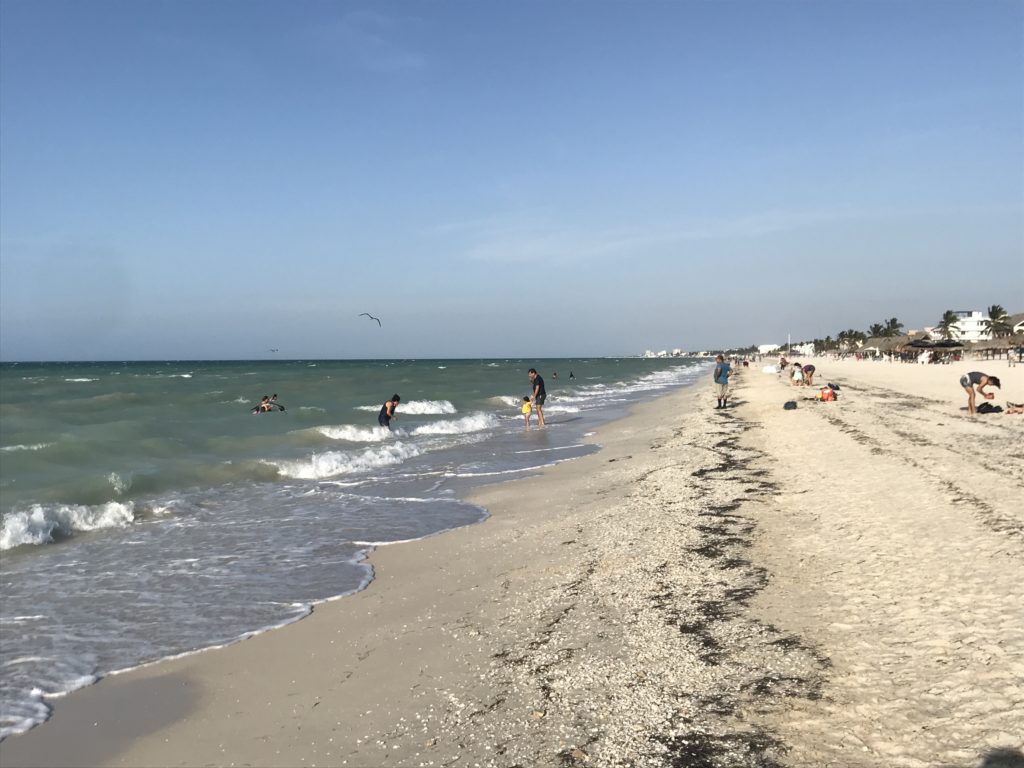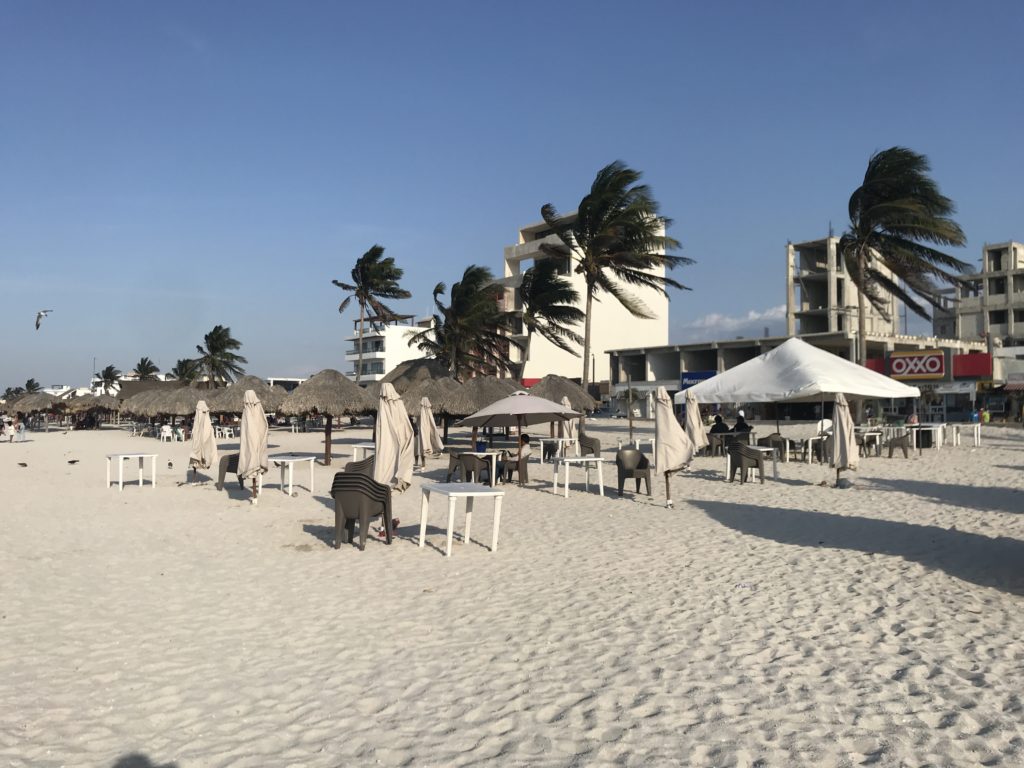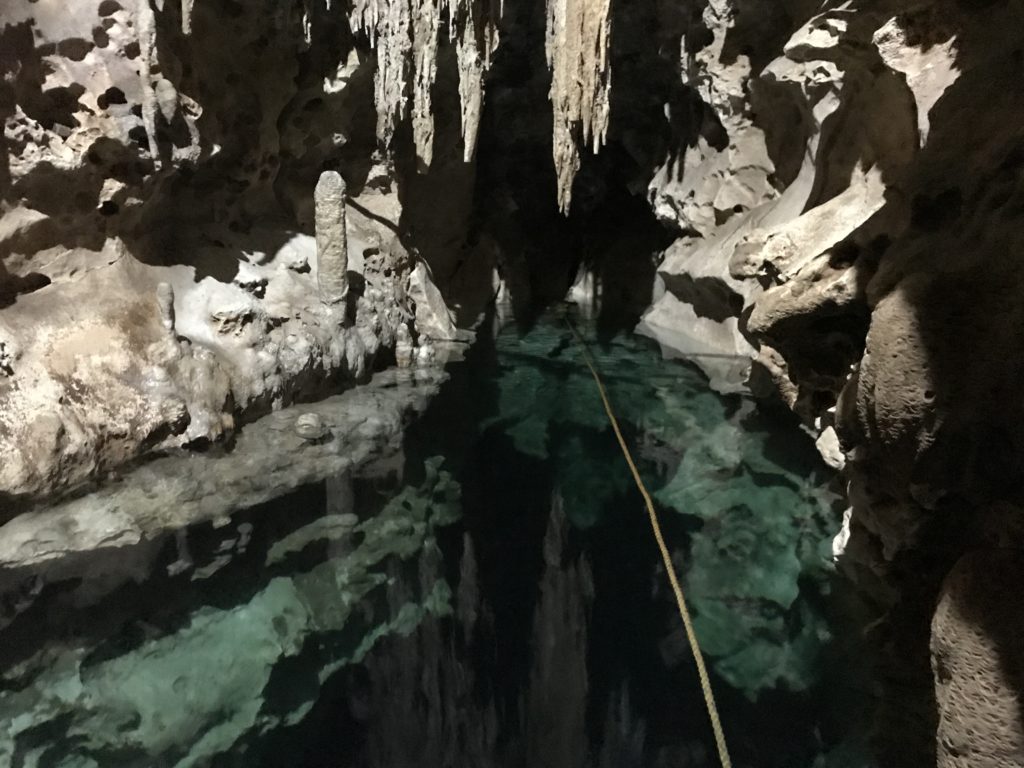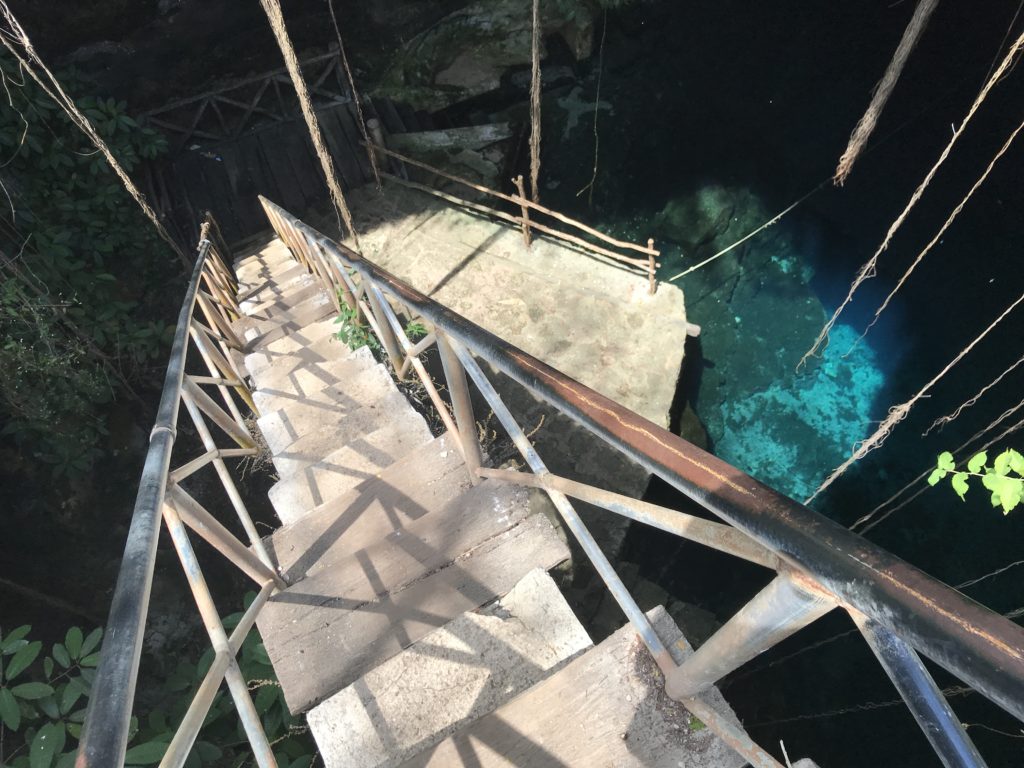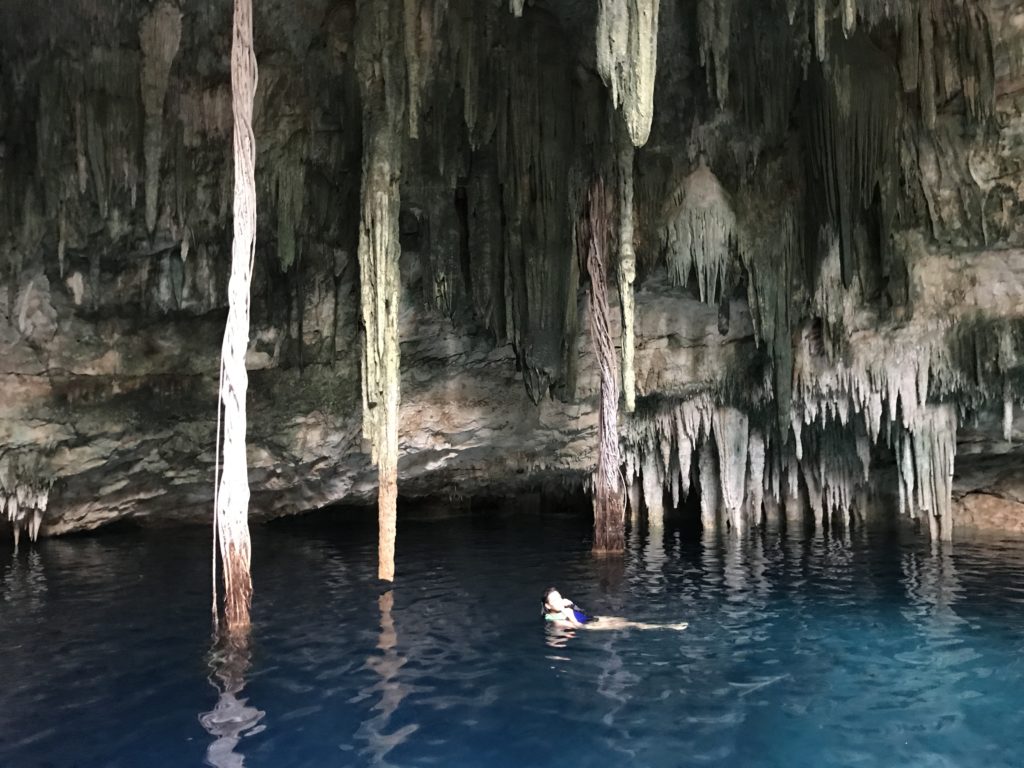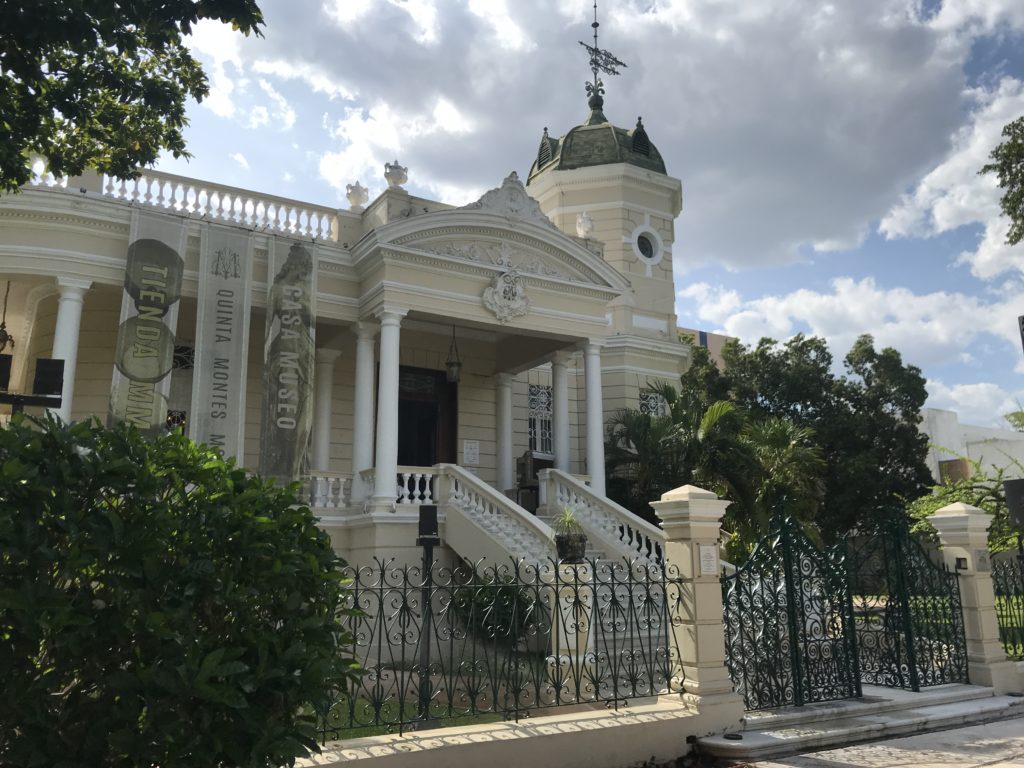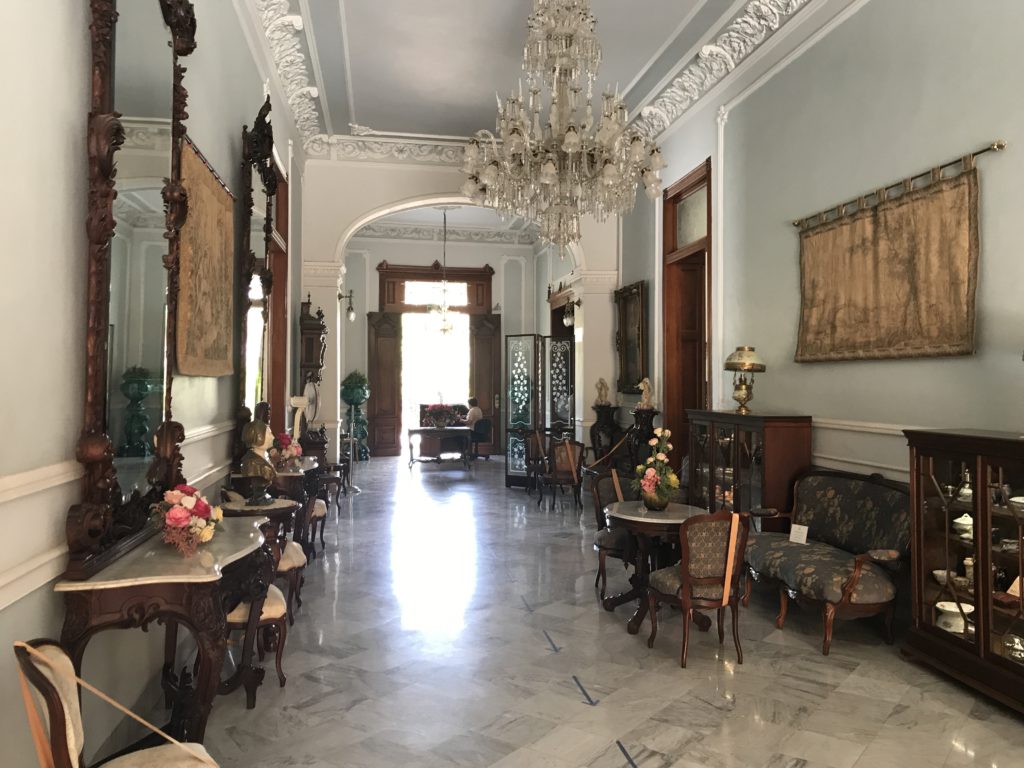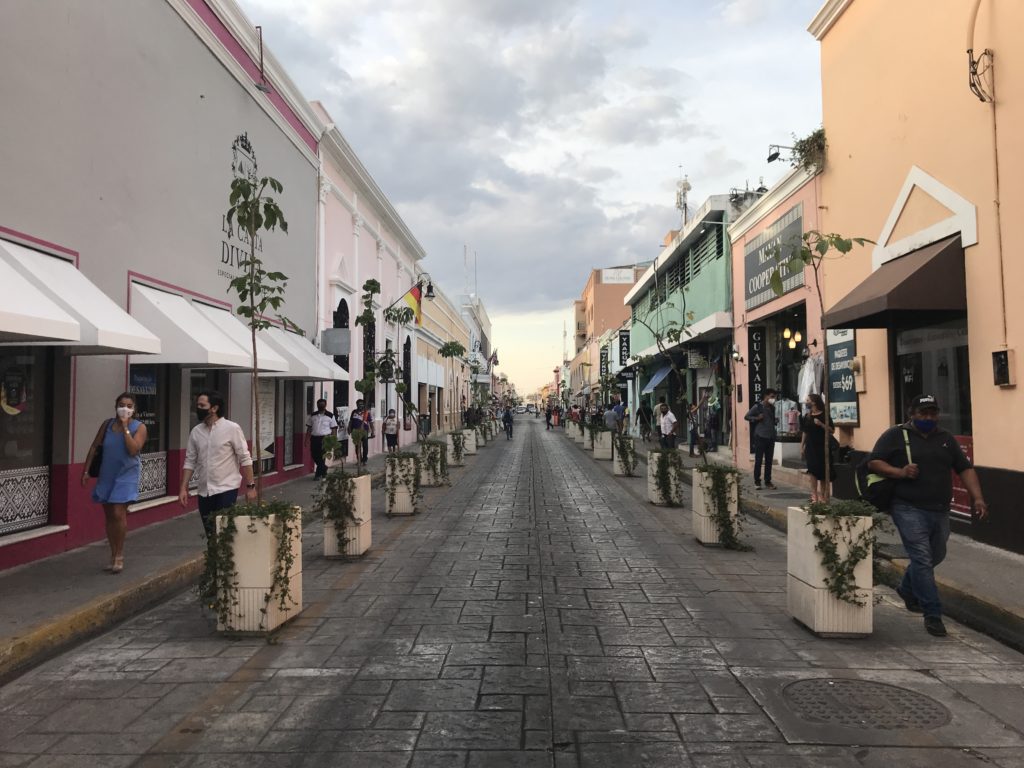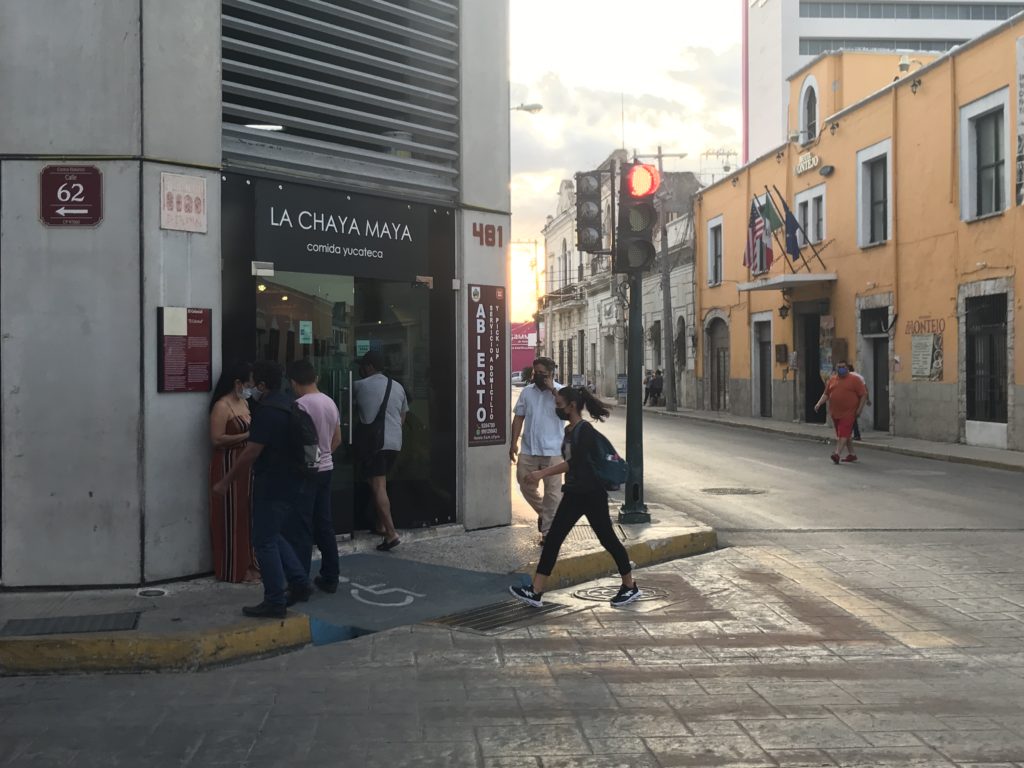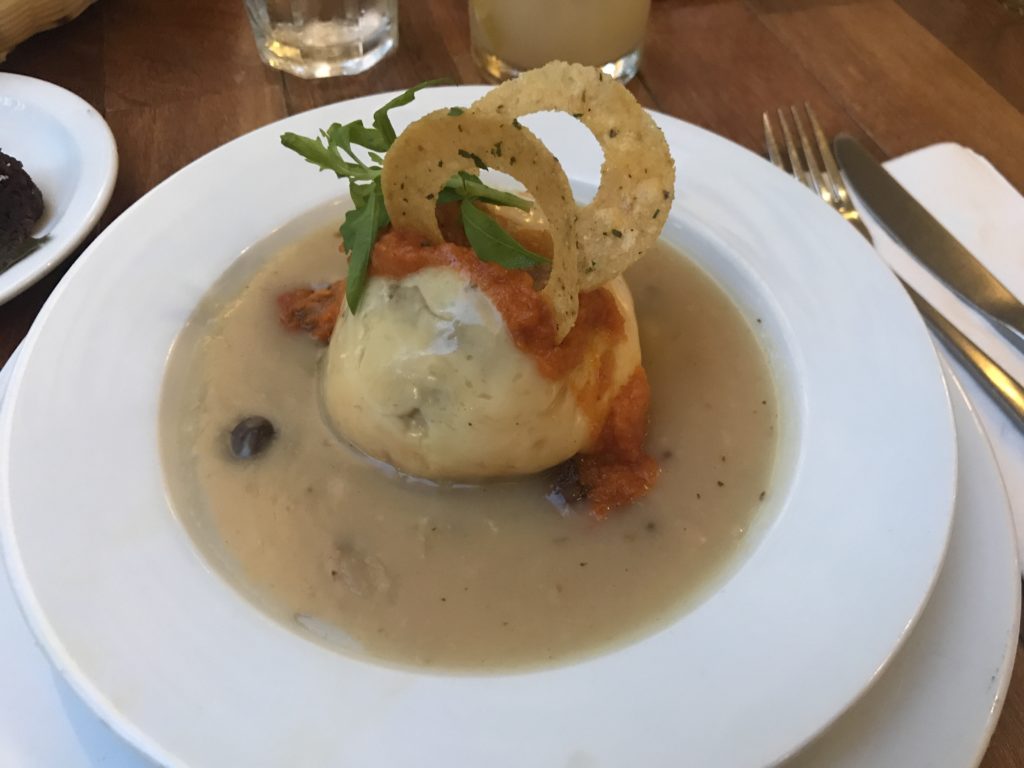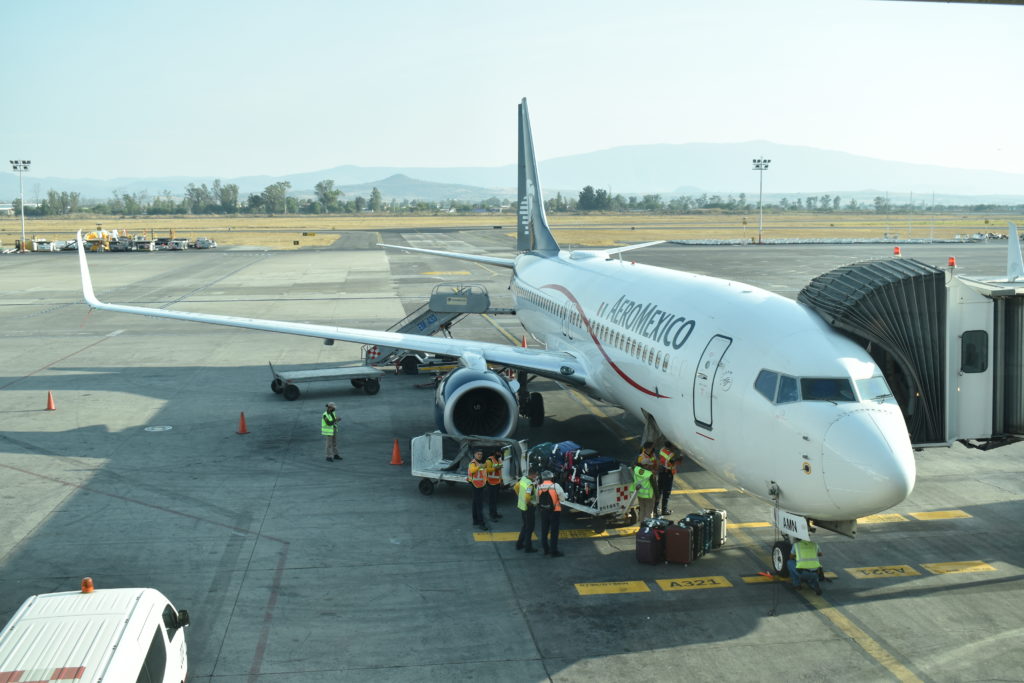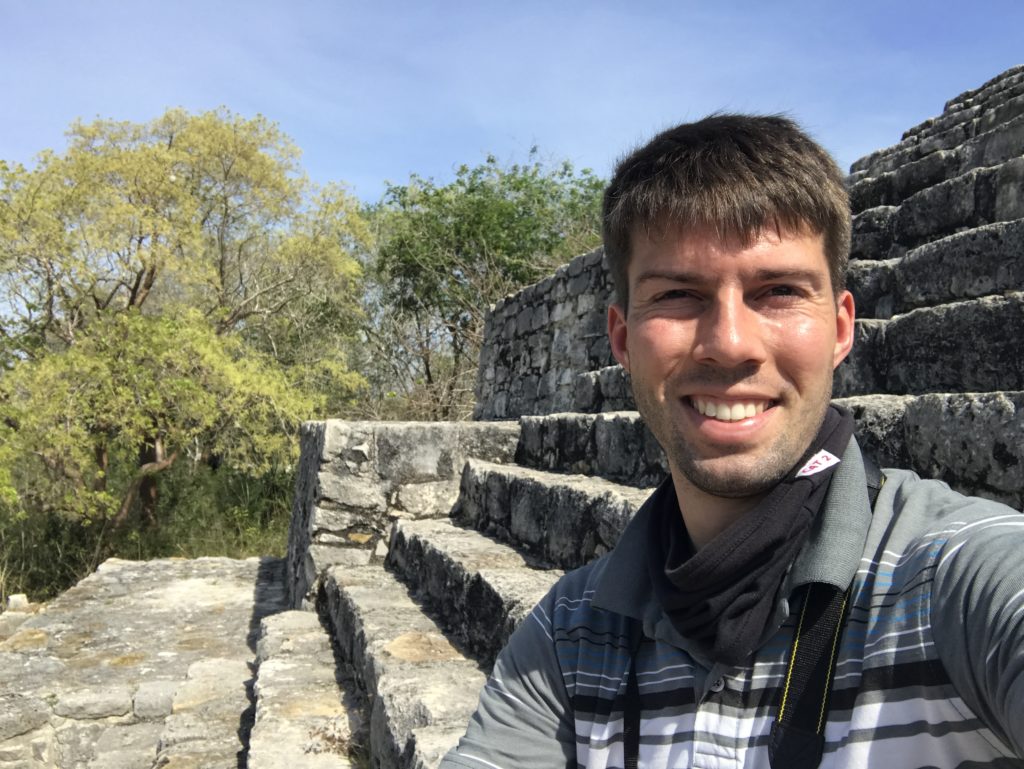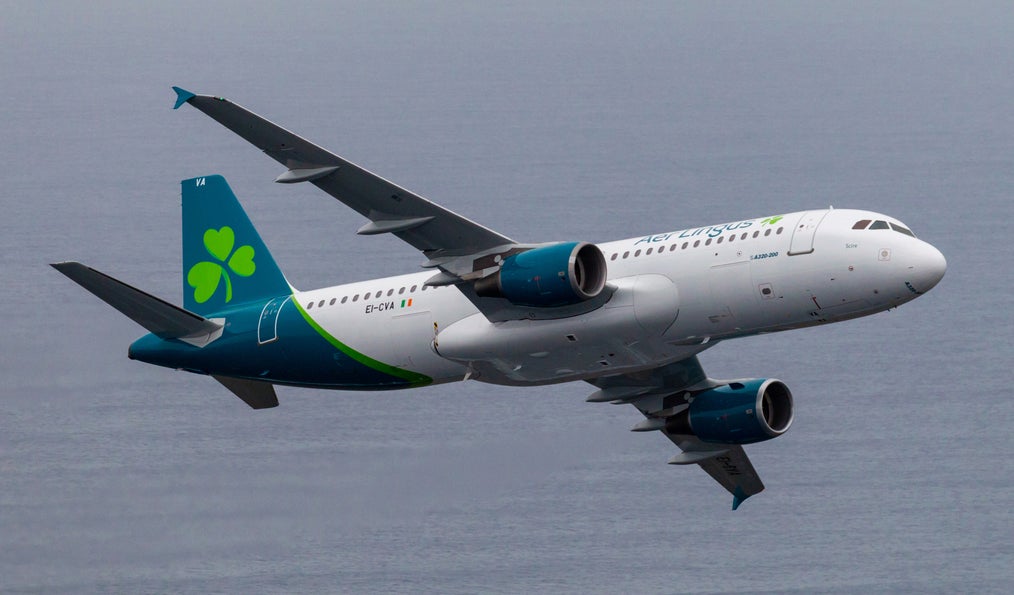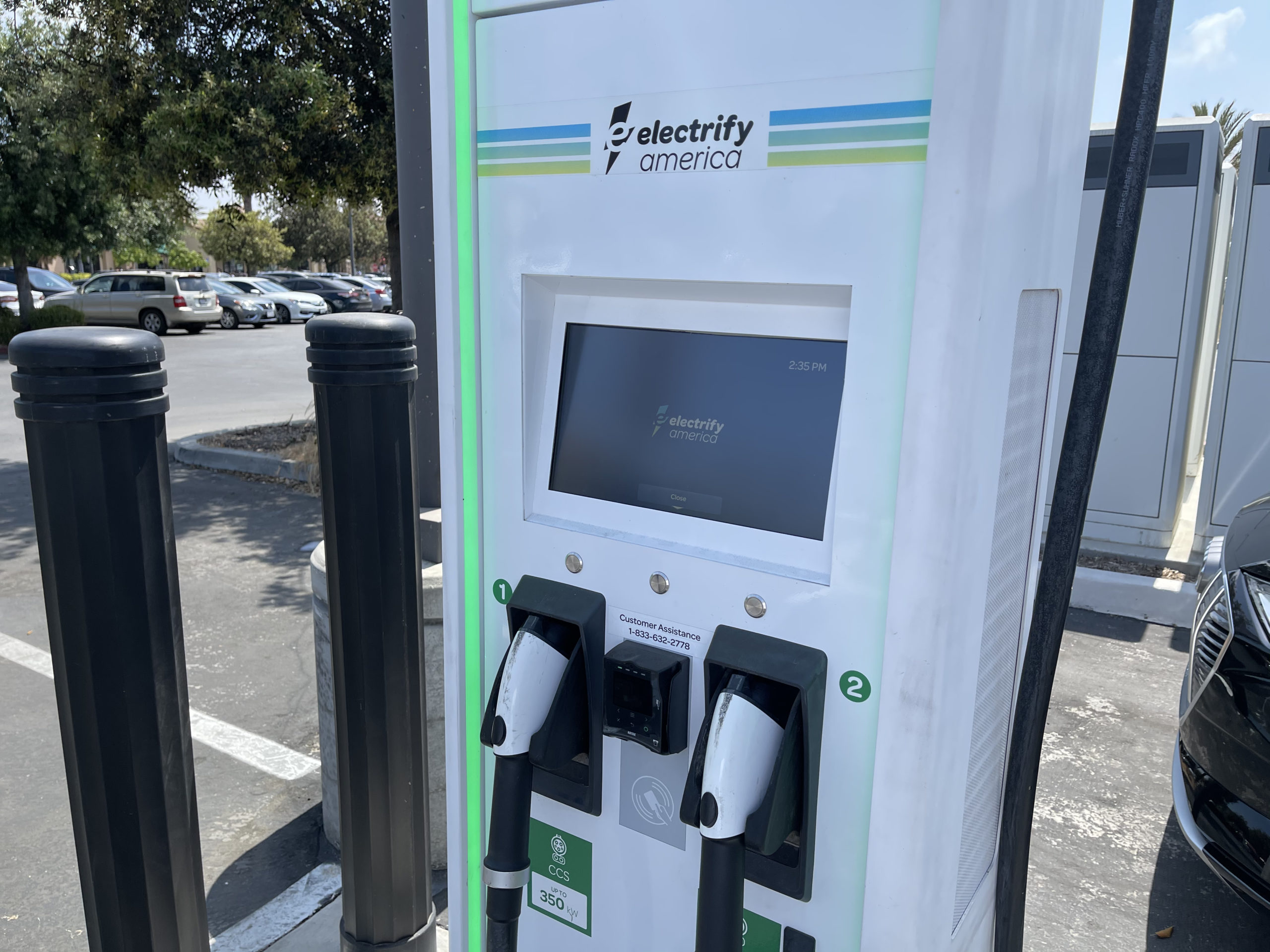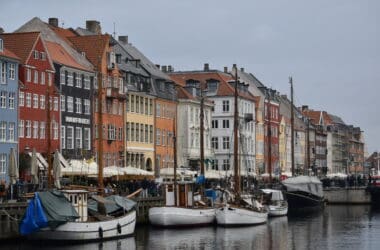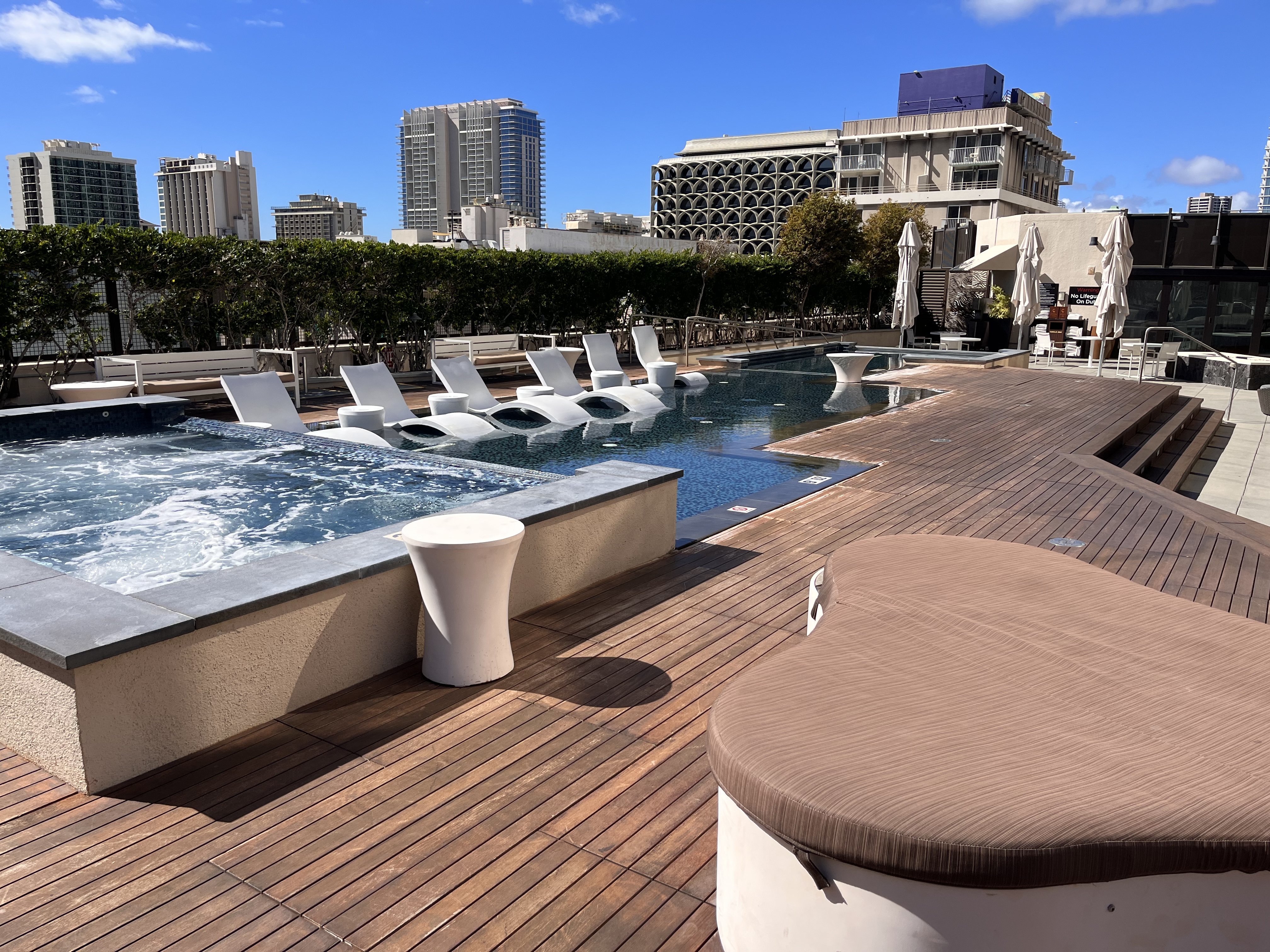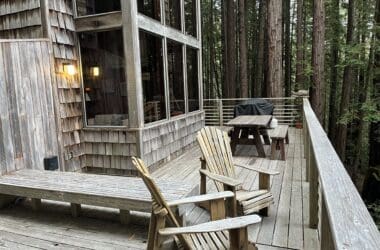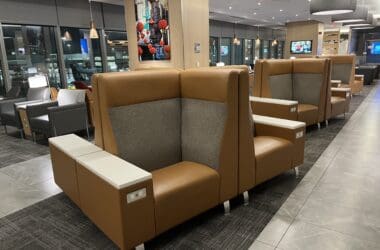At the end of April I took a much anticipated trip to Mérida, the capital of Mexico’s Yucatán state. I enjoyed a jam-packed three days both enjoying the city and exploring the Mayan ruins and awesome cenotes surrounding it. It was quite a different Mexico experience for me as well, as the only other state I’ve visited is Baja California Norte.
In this post I detail what I did during my quick solo jaunt, where I stayed, and some of the great Yucateco foods I enjoyed. My day trips outside Mérida warrant a bit more detail in separate posts.
Planning My Yucatán Trip
Mérida had been on my travel radar for quite some time. I’d first read about the city when it was the featured article in the United Hemispheres in-flight magazine. While I don’t always connect with their “Three Perfect Days in X” articles, the description of Mérida stood out to me. I also love the writing style, as these are always crafted in the present tense, allowing you to feel like you’re really there with the writer.
It had been a few years since I’d read this, though. But it stuck with me. Mérida wasn’t in the immediate plans, either, but after COVID-19 killed a trip to South America last year, I decided I’d burn part of my resulting Aeromexico voucher to visit the Yucatán. Mexico has been an easy choice in terms of open destinations. There is no COVID-19 test required to enter, and it’s close (enough) to home. I booked my flight itinerary in Aeromexico business class for ~$550 of the ~$850 voucher. It was a one-stop itinerary: SFO-MEX-MID.
Mérida offers plenty of inexpensive 4-star and 5-star properties. You could stay comfortably for a week on just a few hundred dollars if you choose. I stuck with one of the several chain options, which include properties in the IHG, Hilton, and Hyatt portfolio. As a Hyatt loyalist, the Category 1 Hyatt Regency Merida was an easy pick. Three nights cost just 15,000 points. The hotel isn’t quite in the center of the city, but it is close to the Paseo de Montejo and you have easy access to the Centro by taxi or on foot (if you’re an avid walker like I am).
While I’d ultimately had some serious issues with the flights (more on that in a later post), my itinerary let me spend three full days in this low-key city of nearly a million people.
Bienvenidos a Mérida!
Aeromexico business class on a 737 ended up being a fine experience. It was my first time flying with Mexico’s flag carrier, and the perfect way to kick off a trip to our southern neighbor. As we were descending over the Yucatán, I realized it had been nearly a decade since I’d last visited Mexico.
The taxi driver that took me from the airport to the Hyatt provided me with many tips and recommendations for my few days in Mérida. He was lively and animated, and I appreciated the conversation during the 20-minute ride. It was also a chance to begin to get into Spanish mode.
When the Hyatt didn’t have my room ready, I took some time to explore the area surrounding the hotel.
Strolling Paseo de Montejo
Paseo de Montejo is a mile-long broad avenue that runs from Monumento a Los Montejo to Monumento a La Patria. The Hyatt Regency is closer to the latter, which was the first place I headed to from the hotel. Although the day was already getting warm, I wanted to walk the length of the Paseo.
There are a number of beautiful old buildings along Paseo de Montejo. This is where the city’s wealthiest residents built their homes during colonial times. A few are now museums. I’d only have time to visit one at the end of my second full day. Today I just wanted to explore the city by foot. I much preferred Paseo de Montejo to walking Calle 60 all the way from Centro back to the hotel. The sidewalk is broad, and it is lined with trees, which you definitely want in the sweltering Yucatán sun. It was in the 90s the few days I visited.
Paseo de Montejo is also home to what might be the bougiest Starbucks I’ve ever seen. This is literally around the corner from the Hyatt. I usually look for other coffee abroad, but it is hard to beat the free WiFi and ability to charge devices at times. Starbucks has saved me more than once.
Walking the Paseo de Montejo was a great was to kill an hour. Definitely consider walking all the way along it during your visit.
Centro
With two miles of walking under my belt, I was just getting started for the day. After checking into my room, I headed off on foot again, this time all the way to the city center. Mérida centro is situated around the Plaza Principal de Mérida, or more simply, Plaza Grande. It is the biggest plaza of the several I walked past or through in the area. Around the plaza are multiple government buildings, the Catedral de San Ildefonso (Mérida Cathedral), and a couple museums.
I sat for a while to just people watch and take in Mérida. Even if it’s a low-key trip like this one, I usually pause long enough to get the “am I really here?” feeling.
I’d hoped the cathedral would be open so I could take a peek inside, but it did not appear to be on a Monday. It’s still beautiful from the outside. The cathedral dates from the early days of Mérida, which was founded in the 1500s. I often forget that a chunk of Mexican history predates that of the United States.
I wandered into the Pasaje de la Revolucion, initially curious about the odd statues. It’s located next to the cathedral. Even though art museums are typically not my thing, I ended up spending most of an hour at the Museo de Arte Contemporáneo Ateneo de Yucatán, the entrance to which is inside the passage.
I just had to be careful not to catch COVID-19. The museum is a highly contagious area.
Further around the plaza is the Museo Casa Montejo. It is supposed to be an excellent museum in Mérida, and the façade facing the plaza is quite interesting. Unfortunately, it was closed while I was there. Across the plaza the Palacio de Gobierno del Estado de Yucatán was also not admitting visitors. I’d hoped to see the murals inside. Some of the closed places should be reopened post-COVID-19, if they are not already.
I wandered up and down the side streets of the centro for a while, browsing for some souvenirs and taking in the delicious smells. I’d end up eating at a restaurant near the hotel, but I considered grabbing food earlier in the day. It’s hard to resist overeating while traveling. Even though I walk a ton, I feel like I come back a few pounds heavier after every international trip. Trying all the food is a must. More on that later.
After a few hours in centro, I slowly made my way back up Calle 60 all the way to the Hyatt. Renting a car was a must for my upcoming day trips, and I had to make it there before 5:00 PM. There are multiple car rental agencies conveniently located across the street from the Hyatt Regency.
Two other things I want to mention about exploring Mérida: you can enjoy the city by horse and carriage, which you can rent by the hour. There were quite a few out in the evening, which is probably the nicest time to enjoy the city atmosphere. You’ll also see cool paired chairs all over the place. The bright pink one with flamingo art painted on the seat was my favorite among all I spotted.
Dzibilchaltún
While my first half day was spent getting to know the city, I spent almost all of the following day on a day trip outside Mérida. I didn’t settle on the exact itinerary until the day I arrived. It was difficult to decide whether to spend more time seeing the city itself or whether to enjoy more of what Mérida has to offer outside the city. The two biggest draws are multiple Mayan ruinas and the famed Yucatán cenotes. I decided to wanted to visit both. While it is possible to visit both the ruins and cenotes in the same day, you’d be a bit rushed to fit it all in.
I settled on visiting Dzibilchaltún, the ruins closest to Mérida. There are a few to pick from within an easy drive, but Dzibilchaltún was suggested to me for both its ease of visiting and what you can learn at the site. Heading out early in the morning in light traffic, it was only a 30-minute drive from the Hyatt Regency. I arrived right at 8:30 AM, which is when the ruins of Dzibilchaltún.
The Dzibilchaltún museum is unfortunately closed for maintenance/COVID-19, but you can still explore the rest of the site. The site entry fee is ~$13 USD. I’ll detail more about the ruins in a separate post. Sitting on top of this pyramid gives you a great view of the whole site.
Arriving so early, I had the ruins mostly to myself. I found them well worth the entry fee. You can have a good visit in around 2 hours. Assuming the museum reopens, I’d guess that would be worth another hour. Plan a solid half day for enjoying Dzibilchaltún.
Circuit of Sand, Stone, and Salt
Rather than head back into the city, I decided to take a drive. There is a second ruins site out near the coast, and I decided I’d make the trek out to it. With a name like Xcambó, it’s time for a lesson in Yucateco Mayan. Turns out the “x” makes a soft “sh” sound. You can give it a bit of a leading vowel sound when it begins a word. Thus, Xcambó is roughly ish-cam-BO or shcam-BO.
Eventually I mad it to Telchac Puerto, a nice, quiet beach town. It’s a drive, but it’s far less crowded than Puerto Progreso, the closest beach to Mérida. I also think it’s a much nicer beach and would be worth driving to if you want to spend the day swimming in the warm Caribbean waves. I stopped long enough to grab tacos for lunch and enjoy a quick walk along the sand.
The X’cambó ruins are much more compact that Dzibilchaltun, but a lot of the structures have been put back together. Interestingly, there is the remains of a church that was added to the site centuries prior. The place was deserted when I arrived. X’cambó is much cheaper than Dzibilchaltun at ~$4 USD for entry, cash only. You can enjoy the archaeological site in under an hour. Not a lot to the ruins, but a cool stop if you want to head out here.
I tried to make a friend while at X’cambó. He was a bit skittish, but did let me get close enough at one point to take a nice shot.
My trek to X’cambó resulted in one interesting find: bright pink salt pans! It was cool to watch two guys collect the pink salt in giant chunks from the bottom of the pools. I have to imagine working here in natural salt water every day would be fantastic for ones skin. For five pesos I became the proud owner of a small chunk of pink salt.
I grabbed a snack and drink at Oxxo further down the coastal road, having finished all the water I’d bought. Did I mention the Yucateco sun is intense? After another 30 minutes or so, I made it to Progreso. The beach here is more popular and much more accessible from Mérida. The highway is also excellent between Mérida and Progreso since there is an enormous pier at the latter. It’s the longest in Mexico. I took a dip to cool off after being out in the sun so much. The wind was rather intense, though.
My driving circuit complete, I made it back to the Hyatt where I rested, took a quick swim, and then enjoyed another walk along the Paseo de Montejo. I considered enjoying the evening in the centro, but being in the sun for hours had really worn me out. I’d have a chance my final evening.
Los Cenotes!
Mérida is surrounded by many cenotes, natural limestone sinkholes that usually contain water. Visiting some of the more beautiful cenotes and going for a swim in them is one of the best day trips you can enjoy in the Yucatán. There are many within an hour of Mérida. After looking up a few options, I decided to visit the cenotes at Chunkanán.
Leaving the hotel around 8:30 AM, it took me a little over an hour and a half to make it to Chunkanán. I gassed up at a Pemex station along the way, and the attendant highly recommended I head a little further into Homún. This town is a bit more touristy, but I figured I’d probably have time to visit both, getting such an early start.
Chunkanán is a tiny blip on the map, off the main road that leads to Homún. After parking in a tiny lot, I grabbed my pack and asked the guy waiting at the sign if he could take me to the cenotes. The cost was 500 pesos, a bit steeper that I’d expected. But it included up to two hours of time and the driver has to wait for you while you enjoy a swim in each. Soon I was off on a rickety pony-drawn cart on rail tracks. Kinda crazy. But this is how they get you there.
There are a total of three cenotes you can enjoy at Chunkanán . The first is Santa Cruz. Stairs took me down through the hole in the ground to a small, dark pool in the bottom of the limestone cave. I sat in the water, but could barely see. The creepiness factor was enough to where I didn’t want to swim the 30 feet across the cenote and back. The lights came on partway through, which helped. I’d not expected that. They have to fire up a generator to power them.
The second cenote is located a short distance away by foot. At first I thought it was amazingly cool, given that you climb down a ladder into it. But as I gazed into the dark depths of a 10-meter by 3-meter limestone hole, I realized it is worse. Cooler looking for sure. But I couldn’t get up the courage to even face a swim across the cavern and back along the rope. It was a triple feature of anxiety. Deep water? Nope. Darkness? Nope. Alone? Nope. There were definitely thoughts of dying alone in the bottom of this creepy limestone cave. The best I did was sit of the solid wooden platform, neck-deep into the cool water.
Lately, I’ve been doing a lot of thinking on how to face fears in life. The things most worth doing are often the most difficult. If we allow fear to run the show, we never step out of our comfort zone. This was one of those clear moments for me, and I failed the challenge.
The trek to the final cenote is another 15 minutes by rail-cart. It’s by far the biggest and best of the three Chunkanán cenotes. This one has a much bigger opening and the sunlight can make it all the way in. I was way more comfortable swimming here. There is when a ledge to jump off and I would jump in one side and swim around to the stairs.
You’re given up to an hour at the final cenote, which is way more than enough, especially traveling solo. I enjoyed the last one for about 30 minutes. The total trip to all three took approximately 2 hours.
Heading over to Homún, I are a mediocre lunch at Cenotes Santa Barbara before heading off by bike to enjoy the three cenotes at this location. You can also take a rail cart, but I’d already had that experience, and Chunkanán is a way better setting for this. Only one of the cenotes here is really excellent. The first one is a fine swim, but it’s clearly been chiseled out and looks totally unnatural. The water also isn’t especially clear. The second cenote is by far the best, and it was super popular. I had the Chunkanán cenotes to myself, but there were many people here at Santa Barbara. As this is run by a private company, you do have to use a life vest.
Back in the Heart of Merida
It was midafternoon by the time I wrapped up my day at the cenotes. A little over an hour later I was back in Mérida. It was time to return my car, which had served me well for two days. I’m very glad I made the choice to take full advantage of it for day trips outside the city.
After a quick work call, I headed around the corner to Casa Quinta Montes Molina, a lovely 18th century home that houses a period museum. It is along the Paseo de Montejo and very much worth a visit. The house has been a museum for years, but up until COVID-19, it was also occasionally still used as a private residence. The rooms give you some insight into how Mérida’s wealthy lived a couple centuries ago.
I spent my final evening enjoying the centro of Mérida once again. I will say that the evening is the best time to just stroll and take in the city. There are more people out, and the sun isn’t beating down on you. If I had had more time, I would have planned to enjoy a third day seeing multiple museums with the evening spent again at the plazas and enjoying dinner at one of the many good restaurants.
Although cheap street food is often my choice, I decided to enjoy the two recommendations of the taxi driver on two different evenings: La Chaya Maya and the Museo Gastronomia Yucateca. Both are nicer restaurants, although they are still very easy on the American wallet. La Chaya Maya is popular with tourists and locals alike.
I enoyed a queso relleno at the Museo de la Gastronomia. This is a Yucateco dish that consists of a large Dutch or Belgian cheese that is hollowed out and stuffed with a mix of pork, onion and spices. The cheese is then typically steamed to soften it but not to the point of melting all over the place. I found it downright delicious. I paired this with a Yucateco cocktail that included xtabentún, an anise-flavored liqueur that comes from the Yucatán. It was also delicious. But I am a major fan of both liquorice and anise.
And Just Like That, I’m Headed Home
While I was supposed to head out first thing in the morning, Chase made a mess of my travel, which left me sorting out my flights back home. I had to rebook an afternoon flight that added a stop in Guadalajara. This did let me sleep in and enjoy coffee from a tiny craft shop along the Paseo de Montejo before I left. With work catching up to me, I couldn’t really maximize my final morning in Mérida.
Odd av-geek moment: I realized as I took each flight was on the exact same Boeing 737-800 for all three segments. How is that for funny??
Overall, it was a great little trip, albeit short. I’ve now been to Baja California, CDMX, and the Yucatán, which isn’t a whole lot of Mexico experience. But Mérida and the Yucatán is the solid winner. If I have the opportunity to go back, I certainly will. There is so much more to see, and I really loved the food I ate, people I encountered, and the history and natural beauty in this Mexican state.





